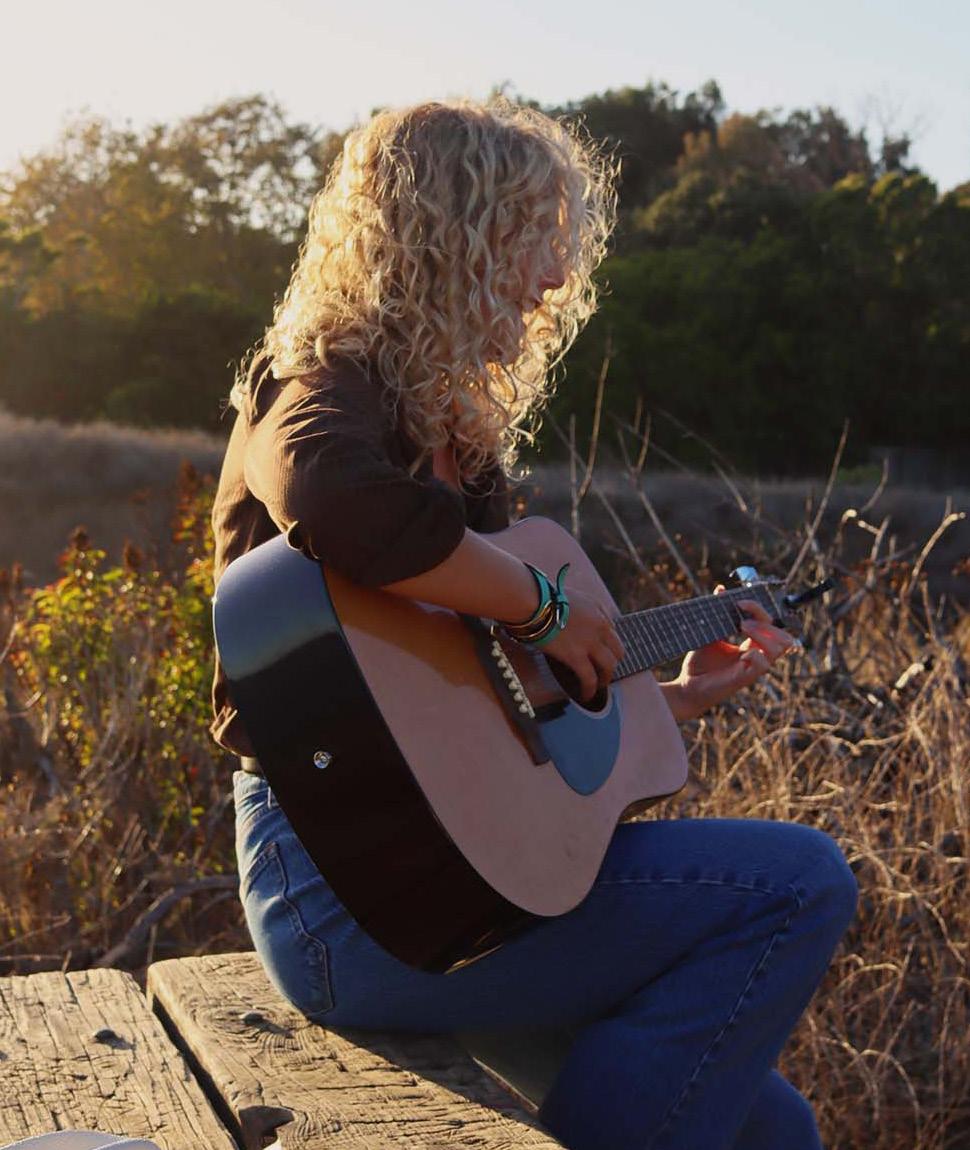The Graphic SPECIAL EDITION FALL 2025
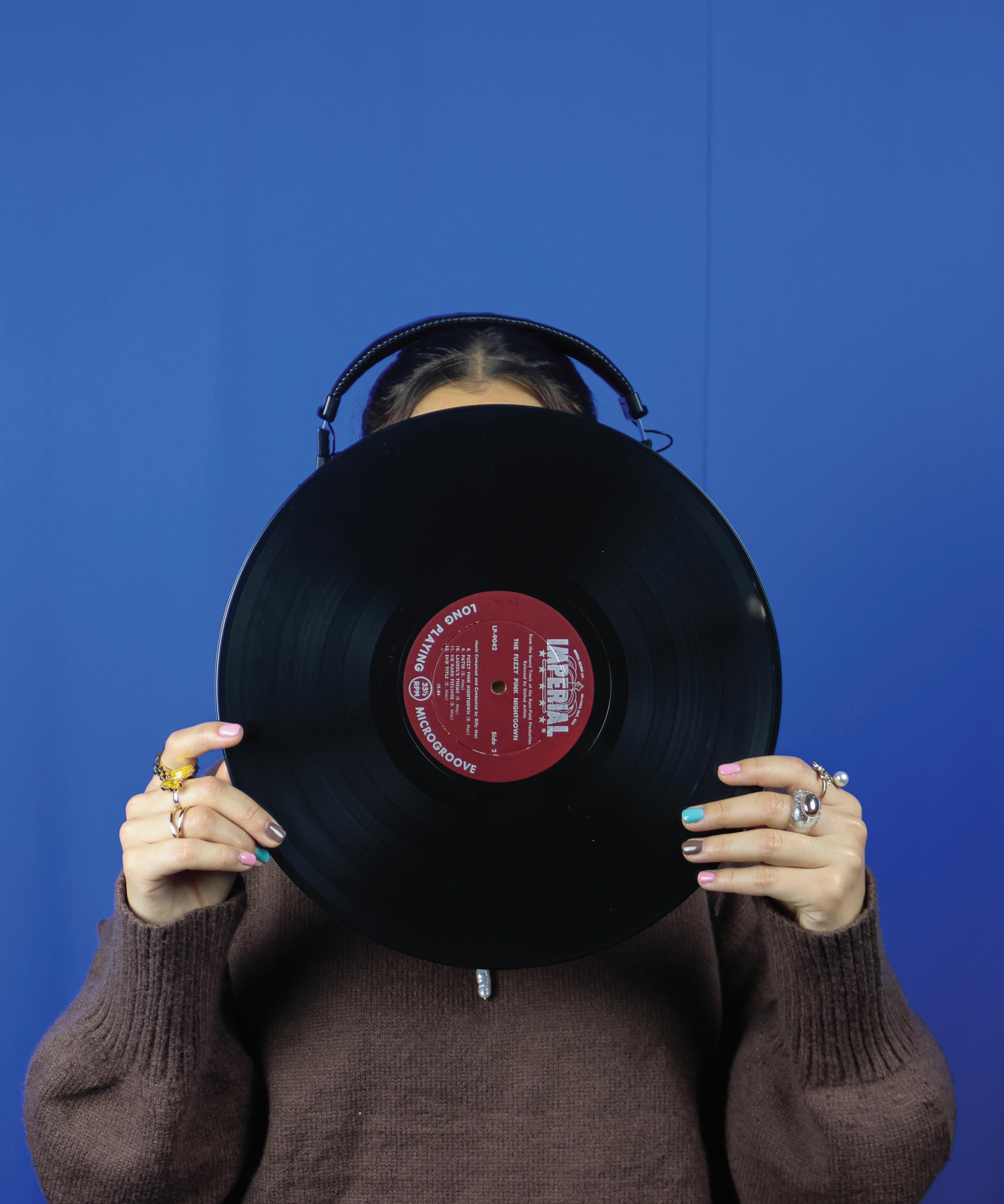
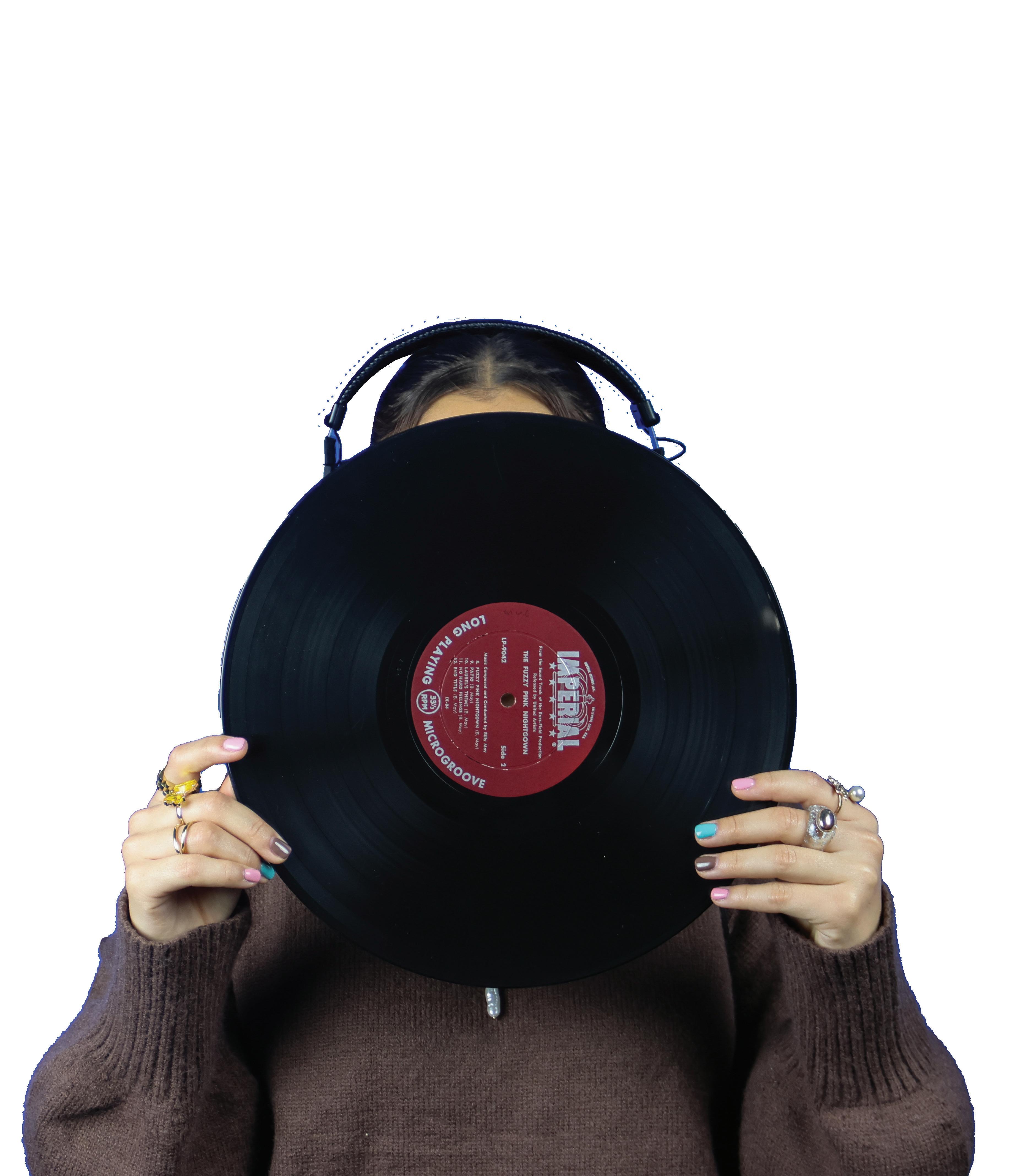


The Graphic SPECIAL EDITION FALL 2025











Worship


written by Nick Charkhedian
Burrow
Things change.
When approaching this Special Edition of the Graphic, there were so many different thoughts in my head I had to compress and focus to really create something I could be happy with.
I knew I wanted to make it about music, but then what? I couldn’t just ramble about my favorites and least favorites or what I’ve been listening to this past year — I needed to give it a news angle. I wanted to make it diverse and fair, but what did I know about some of these stories?
I thought about my relationship with music and how much it changed. It’s not that the music gradually changed after it was released, but some of my favorite albums are albums I don’t touch anymore, and some music I never would’ve expected to listen to is in my constant rotation.
So what changed? I did. My music refected the changes that I went through within my own life.
I’m no longer the high school freshman who was barely aware of himself, with an overwhelming amount of thoughts and feelings that I kept to myself while spending hours lost in music.
I’m 22 years old. I’m in my senior year of university, I’ve fallen in love, I started working to be the change I want to see in my community, I’ve visited the country I was constantly told about by my family growing up and I’ve learned how to harness my thoughts and ideas and articulate them through writing.
It’s not just that I changed, it’s that I grew, and it’s an experience I noticed when looking at everybody around me.
I decided to grab seven genres and give it a twist. There’s only so much you could write about your favorite sixteen bars or drum breaks or guitar riffs.
The goal of this Special Edition is to cover the lives of real people in our community. While looking at our community, we wanted to consider both self-discovery and unity, both the internal and external.
Around half the stories in this Special Edition consider self-discovery at an important time for fnding out who you really are, the college years. The other half looks at how music helps unity for a society largely affected by isolation culture, as well as a community who went through diffcult times with the recent fres.
This Special Edition is about the change and growth that we go through everyday. It isn’t just about music, it’s about you, me, our friends, our families, our classmates and coworkers and everyone. It’s about people.
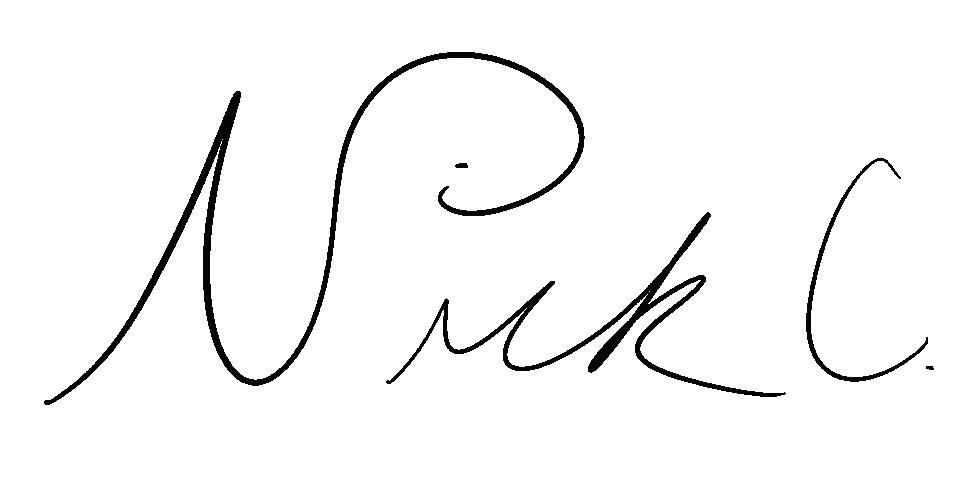
Editor
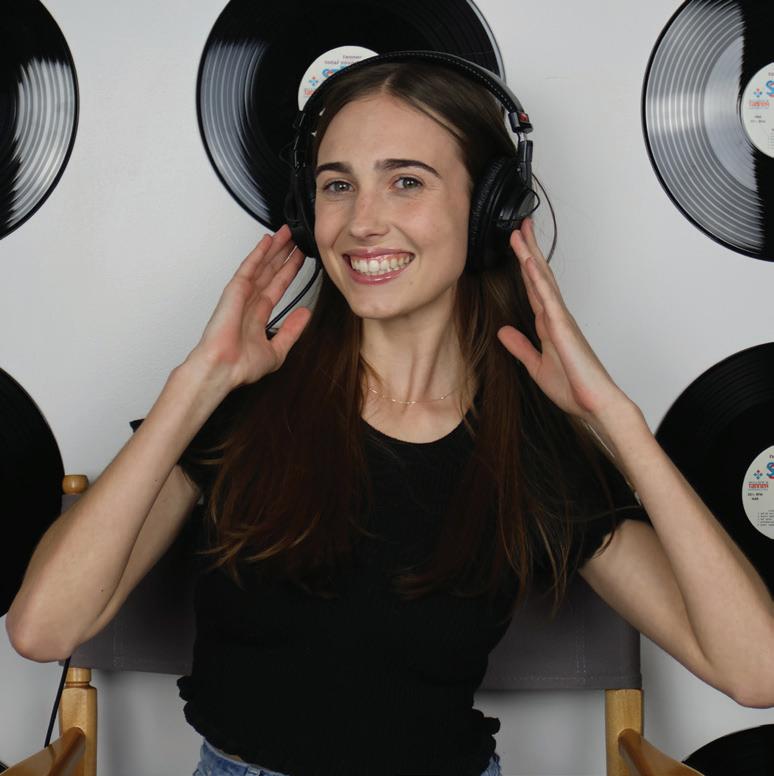
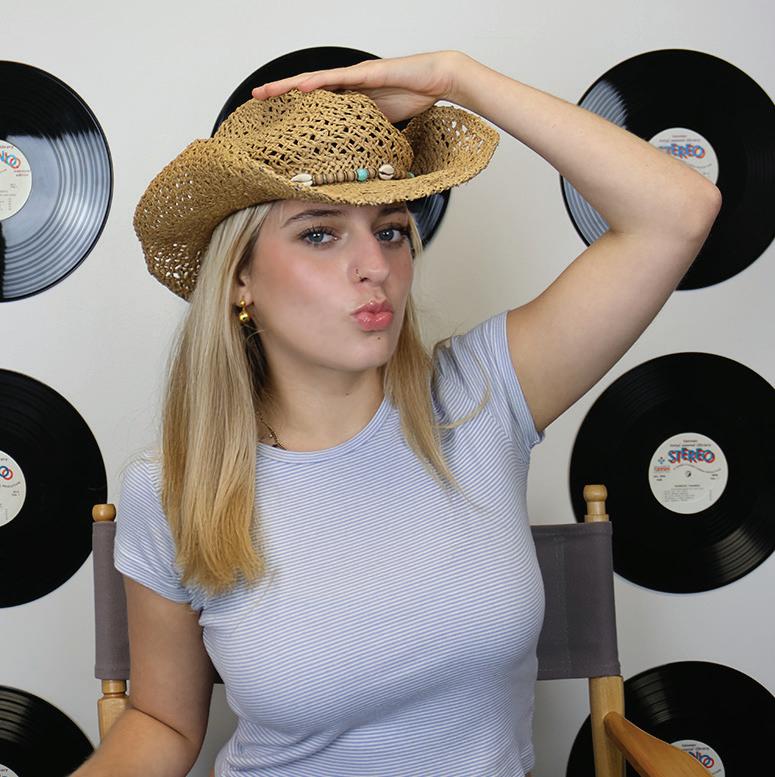

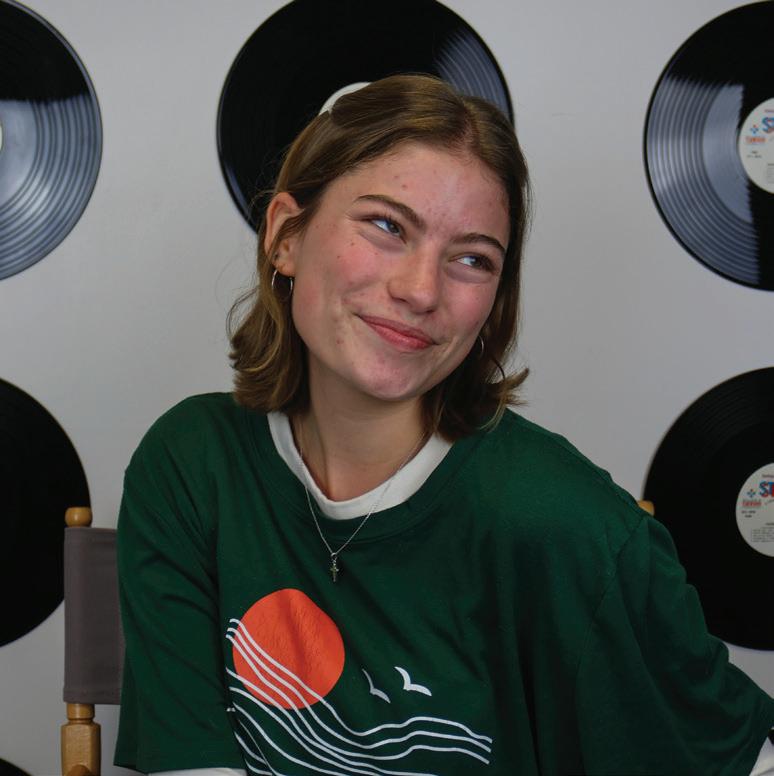

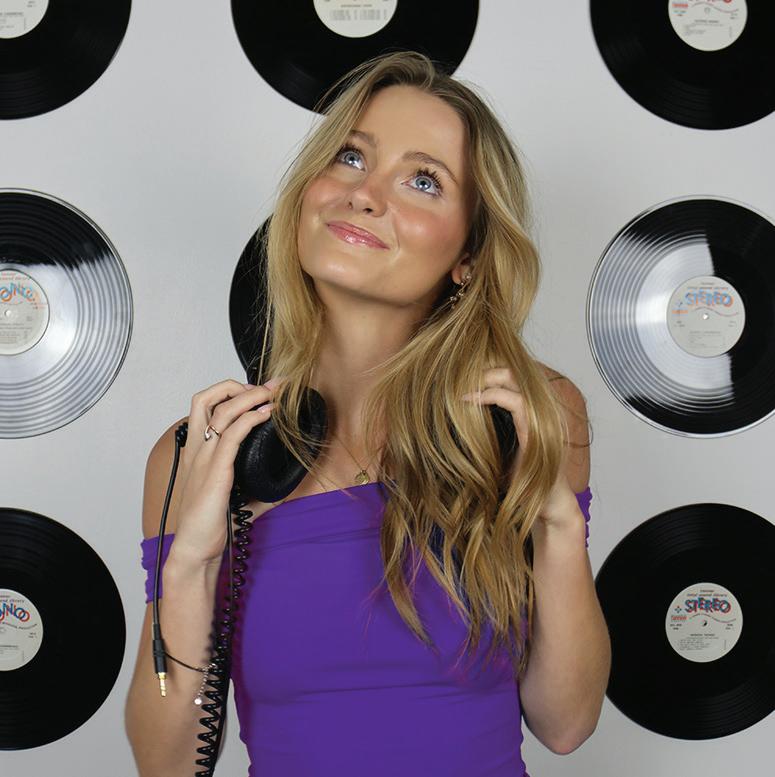




“Old Time Rock & Roll” Bob Seger




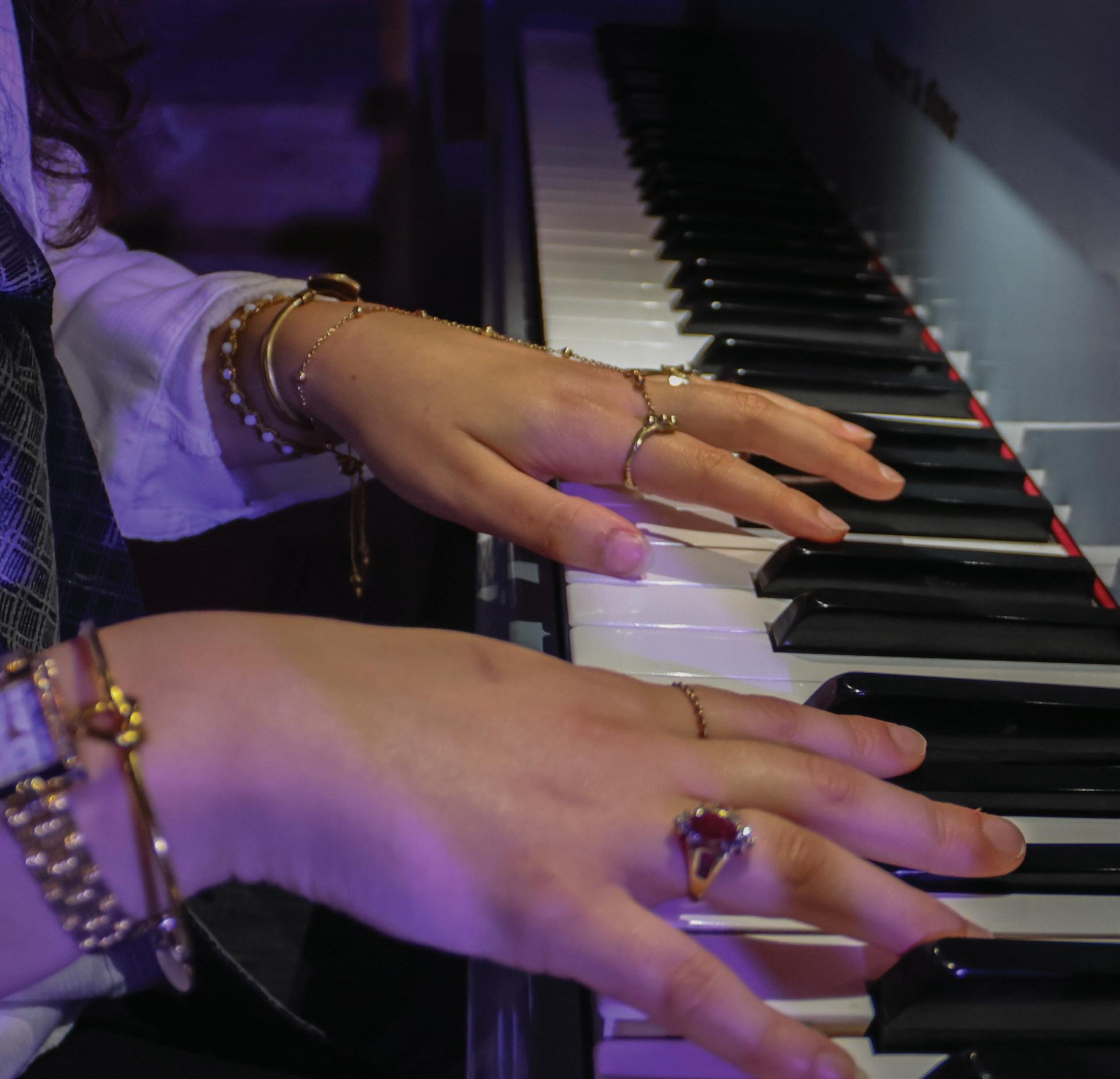
written by Amanda Monahan
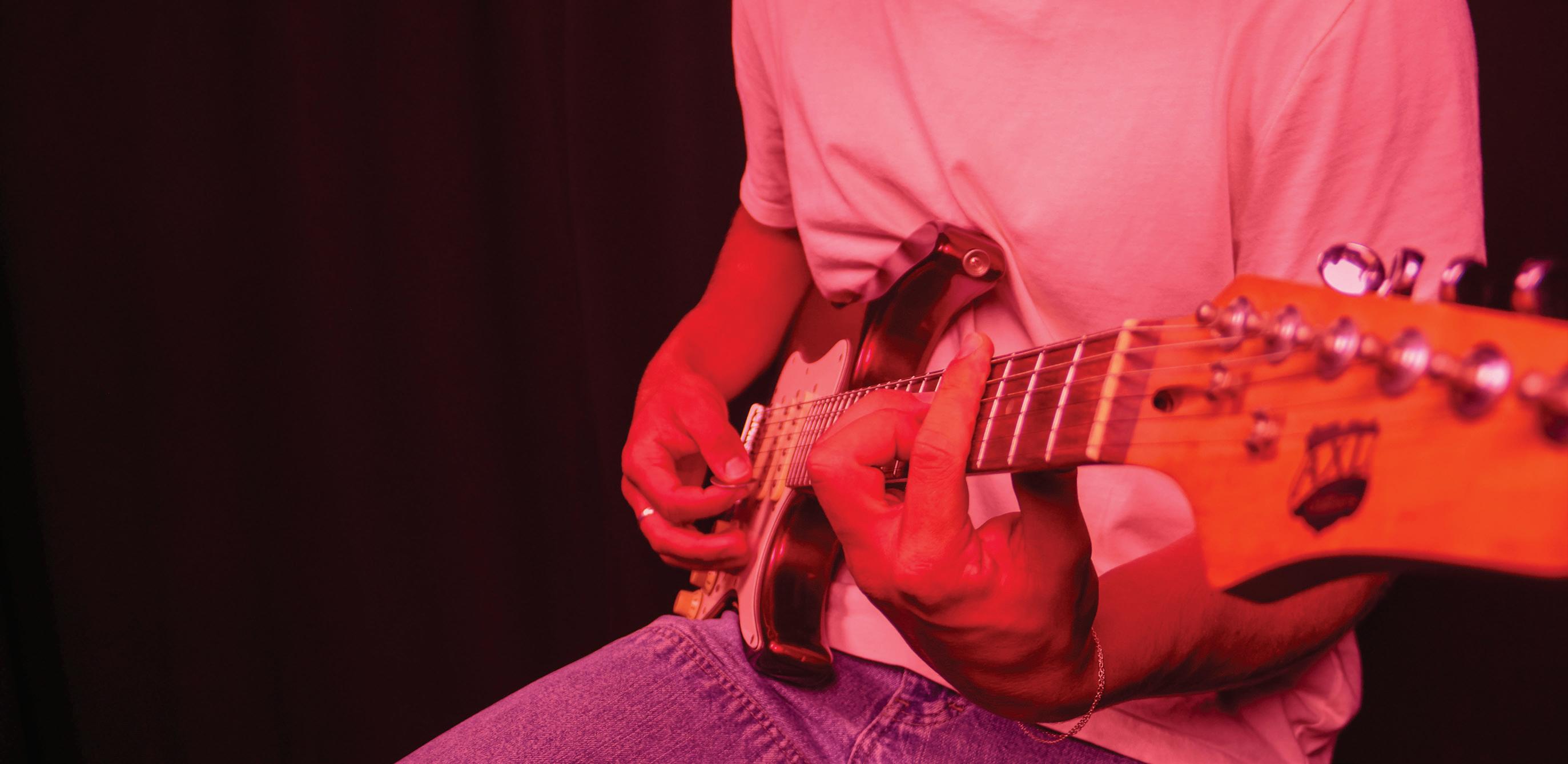
“Lighten up while you still can. Don’t even try to understand. Just fnd a place to make your stand and take it easy.”
These lines that famously appear in the chorus of “Take It Easy” by Eagles encapsulate the simplicity of life. A simplicity senior Mattie Davison said she strives to fnd in music.
“I really like old rock songs and stuff because of the messages they get across,” Davison said. “I feel like it’s more bigger picture about life, taking it easy, don’t let other people bring you down with their thoughts and opinions, that kind of stuff.”
Junior Lucca Jacome said he remembers when his music taste purely consisted of what he described as “sad rap.” With his music taste being heavily infuenced by his friends in high school, he views his music taste as an evolution of itself.
“Sooner or later I just stopped listening to rap,” Jacome said. “I still like all that other music, but I only fnd myself listening to old rock or alternative rock or indie music.”
Davison said her music taste has been pretty solid from the start. Regardless of what age she looks back on, there was always one thing: rock music.
Davison, Jacome and sophomore Bridget Porter all said their parents heavily infuenced and shaped their music tastes into what they are today.
For Porter, this has even helped her discover new music from the same eras and with the same style that she enjoys. She said her mom once asked her, “You know The Smiths?” and then proceeded to recommend similar artists, which helped broaden her music taste even more.
But this has helped deepen her relationship with her parents too, Porter said. Some of her fondest memories with her dad include long car rides where they listened to music for hours, realizing they shared the same music taste.
Jacome said with his mom growing up in the 1980s, he now sees the profound infuence her music taste has had on his own.
“My mom was an 80s girl and when I was growing up she controlled the aux,” Jacome said. “She really put me on to her music taste.”
Jacome’s favorites from his mom’s recommendations include
Foreigner, Duran Duran and Michael Jackson. However, he said his love of old music goes beyond just his parent’s infuence.
Jacome said he often wonders what it would be like to live in the time his parents grew up in — a time he believes would be simpler.
“You could think of the time period your parents lived in, and just think about how lucky people had it back then,” Jacome said.
When Davison was growing up, she said she remembers her mom working and her brother being at sports constantly, leaving her and her dad at home together. The two didn’t enjoy silence, so no matter what they were doing, whether it was cooking, playing outside or go-
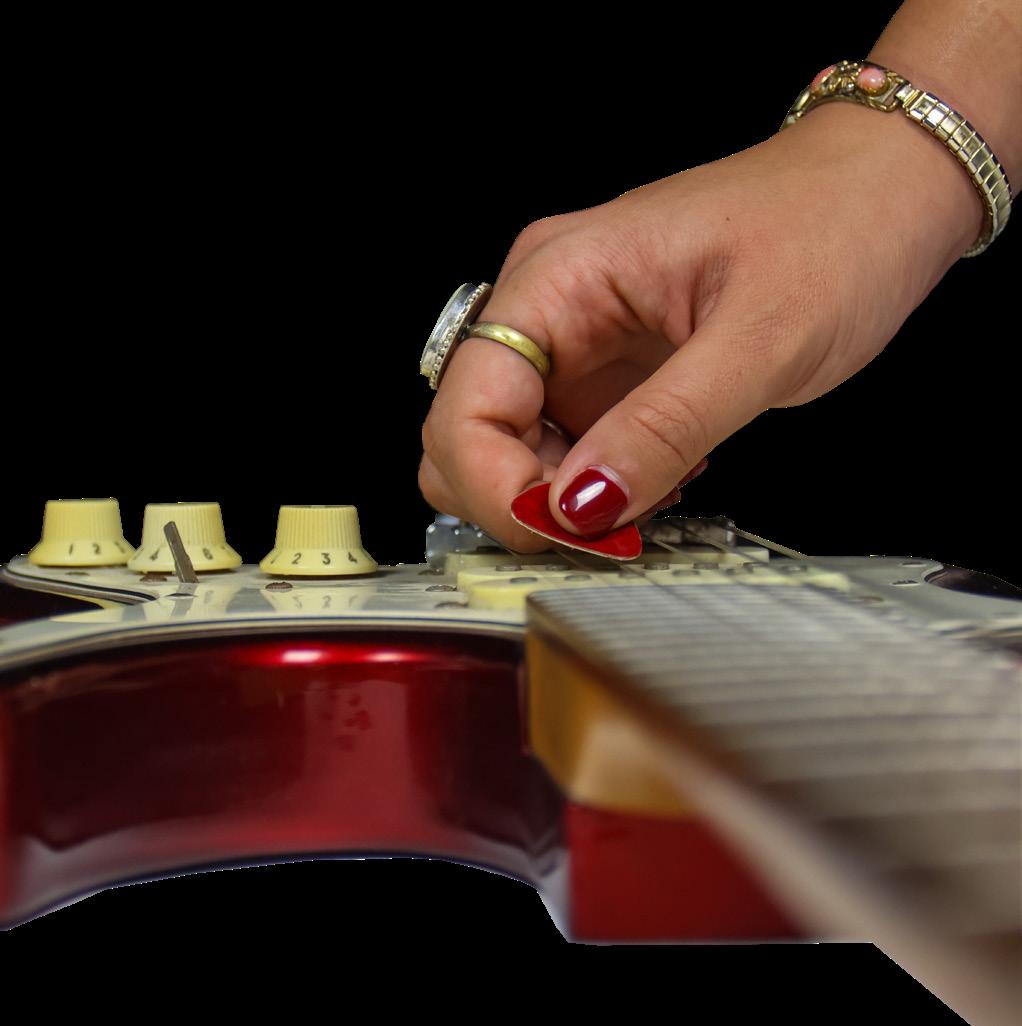
but we both knew and loved these songs and would connect through them.”
Not only are these Davison’s frst memories of music, but also the ones she’s creating now, she said.
“The frst song lyrics I really memorized were these old songs because my dad loved them so much,” Davison said. “As I’ve gotten older, I’m realizing what these lyrics are about and saying.”
Jacome said he frmly believes modern music has lost its taste in terms of meaning, composition and general popularity. He considers artists like The Smiths, Michael Jackson, Queen, Guns N’ Roses and others who made their claim to fame during the 70s and 80s.
“Back then, everyone was good,” Jacome said. “They were just all good in their own way.”
Even those not at the forefront of these popular bands or artists, such as Brian May of Queen or Johnny Marr of The Smiths, proved to simply be excellent musicians — all of them, Jacome said. This is something he believes modern music lacks.
“New music has lost a little bit of its favor,” Jacome said. “It’s just kind of less meaningful.”
Porter emphasized the esteem that older artists hold in the concert world today. She said she remembers being




unsure about going to a Creed concert once, before reminding herself that if she didn’t go this time, she may never get the chance again.
“Going to concerts, like Creed for example, they’re dying off, so you have less of a chance to go,” Porter said.
Porter won tickets to attend BeachLife Festival, a music festival in Redondo Beach, Calif., earlier this year. One of the headliners for the event was the Beach Boys, and just one month later, Brian Wilson died.
“I was like, ‘Oh, man, like, that was my last chance,’” Porter said.
Porter now carries this reminder every time she considers attending a concert, she said.
Davison said she has never broadened her music taste to include genres like modern rap because she doesn’t agree with the morals presented within the songs. She has always stuck with her tried and true genres and artists, because she knows she’ll be listening to something she agrees with in her heart.
Davison was reminded of this recently in one of her classes, she said.
“The other day in one of my classes, we had a question on the board that said ‘Who do you want to be down the line?’” Davison said. “Most of the people were writing about ‘I want to have this career,’ or ‘I want to have accomplished this.’ But I was more focusing on, ‘I want to be a better person,’ ‘I want to be calmer and kind to
the people around me, a loving wife and mother and a person that people can depend on and trust.’”
Davison expresses and searches for her morals and core values through the music she listens to, she said.
“Those are more of the things that I value in life, is just having relationships around me and being a good person,” Davison said. “Rather than maybe more of the monetary things or materialistic things that I feel like songs nowadays will prioritize.”
Similarly, Porter said she views her gravitation toward old music as an outward expression of her indulgence in old things more broadly. She loves owning thrifted clothing and buying vinyl records, which both play a role in her day to day life.
“I guess I kind of have a taste for the older type of stuff, like secondhand type things,” Porter said. “I love going to record stores because it’s something to think about — like, ‘Oh, I wonder who owned this before me.’”







and you get to take three albums with you, what are you taking?
Amanda
The Dark Side of the Moon by Pink Floyd
TIMELESS by Kaytranada
The Slow Rush by Tame Impala
Rubber Soul by The Beatles
The Freewheelin’ Bob Dylan by Bob Dylan
You Don’t Mess Around With Jim by Jim Croce
Paci co by Surfaces
Harry Styles by Harry Styles
5-STAR by Stray Kids
Betsy
Ultraviolence by Lana Del Rey
Rumours by Fleetwood Mac
Hozier by Hozier
The Art of Loving by Olivia Dean Exodus by Bob Marley & The Wailers Blonde by Frank Ocean
From the Fires by Greta Van Fleet
Zach Bryan by Zach Bryan When We Were Friends by The Backseat Lovers
Sev Atcher by Paul Baghdadlian O the Wall by Michael Jackson
Precious Memories Collection by Alan Jackson
Californication by Red Hot Chili Peppers Honestly, Nevermind by Drake Rumours by Fleetwood Mac
Dangerous Woman by Ariana Grande
THROWING PAINT by Abbie Gamboa & Aodhán King
SWAG by Justin Bieber
written by Alexa McGlathery
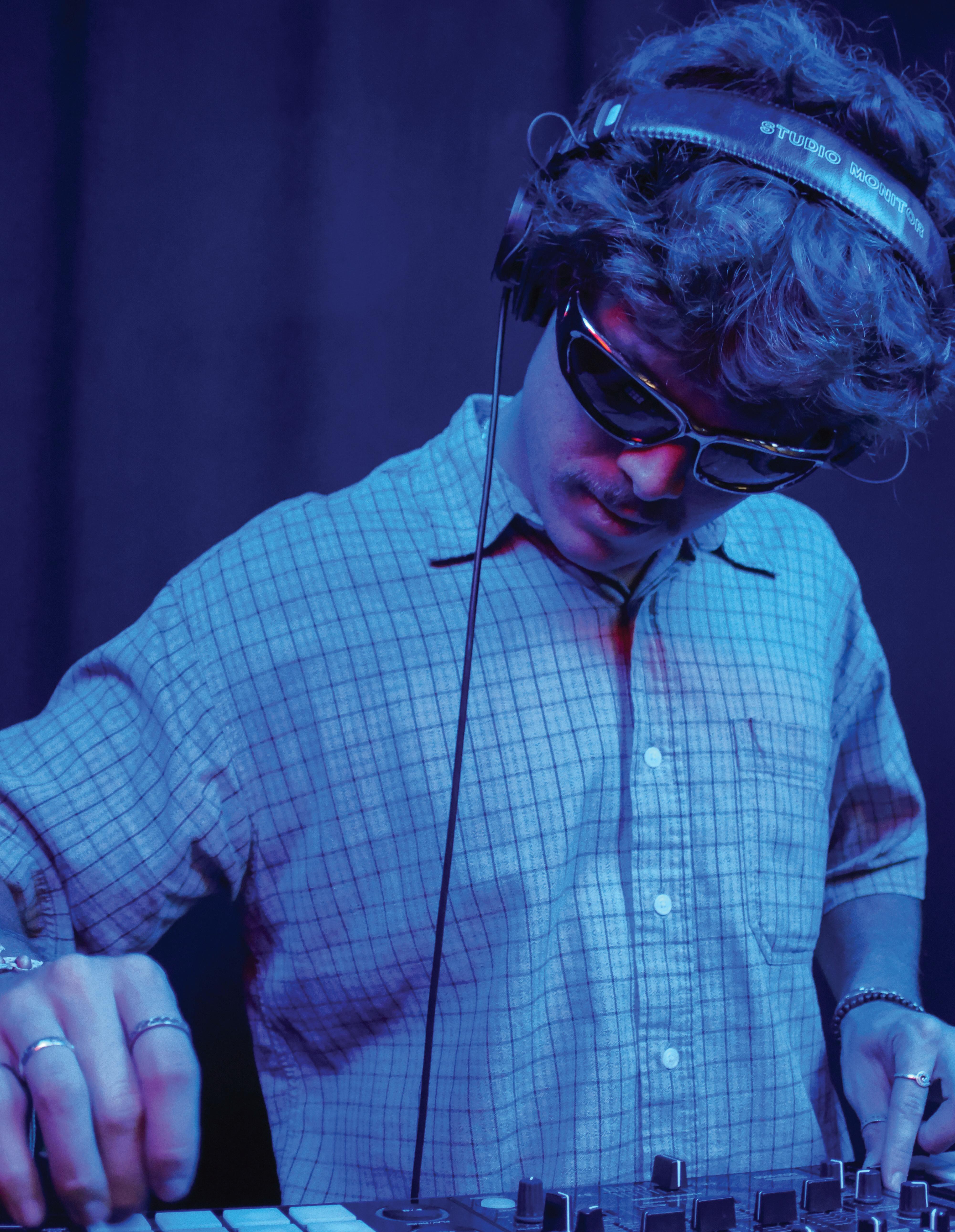
A deep, thumping bassline, a steady 128 BPM tempo and a hypnotic and repetitive drum pattern often paired with minimal lyrics defne one of today’s most popular music genres: house music.
At Pepperdine, house music is especially popular among students. Its pulsing beats can be heard echoing through dorms, car stereos and portable speakers as students crisscross campus.
“I’m listening to it every second of my day,” said Emre Taner, sophomore and DJ for Psi Upsilon Fraternity. “I’m listening to it on my way to class. I’m listening to it on my way to the library and on my way to get food.”
But house music isn’t just something to blast for fun — it gives students a way to come together, connecting over the shared love of a four-on-the-foor beat and funky, infectious synths.
Emerging in the mid-1990s, house music is considered a direct descendant of the disco
craze that dominated the 1970s, according to Universal Production Music.
Over time, the genre has evolved beyond underground clubs and into mainstream music culture, attracting a global audience. Social media apps have been especially infuential for contributing to the rise of the house.
“I started listening to house two years ago and I learned about songs mainly from TikTok,” sophomore Savannah Kofoed said.
John Summit, Dom Dolla and FISHER are just a few breakout DJs who have risen to fame as they draw massive crowds to high-energy rave events where people of all ages come together to dance.
“Last year I went to a John Summit concert and that’s when I really fell in love with his music,” Kofoed said.
Summit is one of the most streamed house music artists, with over 11 million monthly listeners on Spotify and 245.1 million streams on his most famous song, “Where You Are,” according to Spotify.
After the concert, Kofoed said her love for Summit inspired her to explore smaller DJs.
House music has become a way for students to motivate themselves, unwind and socialize amidst the chaos of a busy school day, Kofoed said.
“It releases a lot of dopamine, so it just makes you feel better,” Taner said. “It uplifts you, makes you feel good.”
Taner, a self-described house music connoisseur, grew up immersed in LA’s rave scene. Through festivals like Coachella, he said he developed a deep love for the genre — one he credits for shaping his mindset both inside and outside the classroom.
“It’s house that would get me out of bed, get excited to actually study, do my work, push me to motivate myself,” Taner said.
For junior Robert Donovan, he said house carries a more nostalgic meaning.
“My parents actually started playing house for me when I was a baby,” Donovan said. “So it [my love for the genre] really started with them.”
For students like Taner and Donovan,
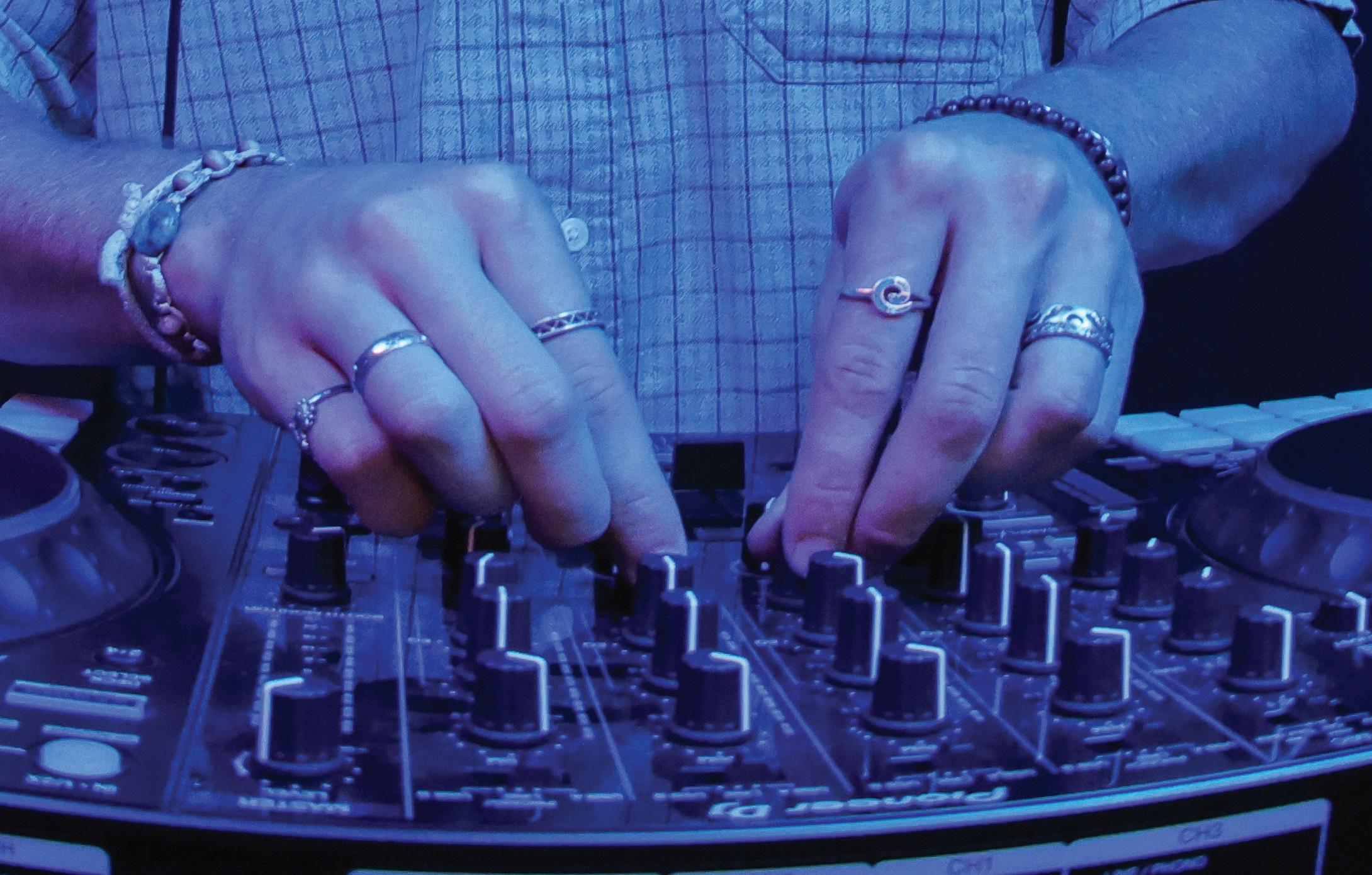



they said house is more than just music — it’s a soundtrack to their daily lives and a source of connection that blends passion, purpose and community.
“[House] defnitely impacts me in every way,” Donovan said. “If I’m stressed, I’ll defnitely throw on some house and it cools me down.”
Students aren’t just listening anymore — they’re hopping behind the decks, turning their passion for house music into DJ sets and live mixes.
Taner, also known as Türko, is an emerging DJ, performing at venues and parties across Malibu, Taner said.
“I wanted to join a frat as soon as I got here [Pepperdine], just so I could start DJing more and have a group of guys who would support me on my journey,” Taner said.
Taner said he’s also performed at venues in his hometown of Huntington Beach, Calif., but his favorite gigs are intimate, high-energy house parties.
“Playing at parties is more fun because you get really up close with the crowd,” Taner said. “You’re not just some guy just playing the music in the background, the audience actually interacts with you.”










Chris Lake & Aatig
Chris Stussy Dom Dolla
Charli xcx
Don’t You Worry
Swedish House Mafia
Sammy Virji, Chris Lake & RoRo
Richie Hova
James Hype & Miggy Dela Rosa
Calvin Harris & Clementine Douglas
Donovan is also an emerging DJ. Performing under the name “Donnie,” he’s looking to land gigs at fraternity events and house parties to grow his presence on campus, Donovan said.
On Sept. 23, he played a set at Skybar in West Hollywood — one of his frst major opportunities outside of Malibu.
“Some long-term goals are defnitely, if I can go all the way with this — play at the big festivals, EDC, Coachella, all the big headliners — that would be amazing,” Donovan said. “Ultimately, I just want to bring the same vibes I felt with music to others, inspire them and get them into the music, too.”
With both Taner and Donovan’s sights set on festival stages and bigger crowds, they agree that they are ready to keep chasing opportunities that let them share their passion for house with a wider audience.
“House is more than just listening — it’s a way to feel the music,” Donovan said.


written by Melissa Houston design by Amanda Monahan
On the very frst week of their frst year at Pepperdine, seniors Quinn Boyle and Niccie Jamitkowski found themselves sitting side by side in a frst-year seminar class called Hard-Hitting Songs.
By the end of the week, before they knew each other’s middle names, the two said they were on their way to Dodger Stadium for their frst Lady Gaga concert together.
What started as a spontaneous decision has since grown into a four-year friendship built off their love for music and their contrasting personalities. Now seniors and roommates, Boyle and Jamitkowski said they couldn’t be more different.
Jamitkowski is meticulous and type A, and Boyle is laid-back and type B — but their shared love for music has been the harmony that keeps their rhythm in sync.
“[Quinn] was like, ‘Wait, you like Lady Gaga?’ And I said ‘Yes, I certainly do,’” Jamitkowski said. “The next day she comes to class and says, ‘Hey, I know we just met, and this might seem creepy, but Lady Gaga is playing at Dodger Stadium this weekend, do you want to go?’ And I was like, ‘Yes I do!’”
Opposites Attract
Gaga is what brought them together, but their opposite personalities is what made their friendship work.
“I’m really type B,” Jamitkowski said. “I tend to be pretty laid back, chill — not in the sense of I don’t care, but more so like nothing’s really that serious. I prioritize fun, spending time with my friends, spending time with my loved ones and music.”
Boyle, meanwhile, said she describes herself as the opposite.
“I’m very type A and Niccie is very type B,” she said. “I’ll be listening to calm orchestrations, ballets, movie scores, and Niccie will be listening to her hyper pop, electronic house music at max volume.”
That contrast especially shows up in their daily lives as roommates.
“She’ll come into my room and it’s like a puzzle hunt in here because I just have so much stuff,” Jamitkowski said. “I have some wings hanging above me, scarves hanging from my lamp, and then you walk into Quinn’s room and it’s like stark white bedding, pressed linens and pressed sheets. It is so perfect and clean in there.”
Boyle said she doesn’t deny it — but she doesn’t see the difference as a problem.
“We balance each other out really well,” Boyle said. “Things that stress me out don’t stress her out, and vice versa. It’s like a puzzle piece.”
While their personalities could have pushed them apart, music became the glue that stuck them together. In their frst-year seminar class, Jamitkowski said they brought up Gaga whenever they could.
“We had to do a project on protest songs,” Jamitkowski said. “Everyone was doing actual protest songs, and we were choosing ‘Born This Way’ as our protest song.”
From there, Boyle said music has spilled into every part of their friendship.
“We try to go to as many shows as possible, and we have an awesome record player that we’ll throw records on whenever we have people over,” Boyle said. “And of course, we are no strangers to karaoke.”
While living together, even mundane moments turn musical.
“We’ll just sing randomly, not even realizing it, like we’ll be doing laundry and singing.” Jamitkowski said. “When we’re in the car, that’s our time to shine.”
Music has also shaped the way they view one
another. Boyle said she admires Jamitkowski’s fearlessness and openness.
“I love how Niccie really gives every style of music a go,” Boyle said. “She’s so appreciative of all forms of music and willing to listen to things and expense new forms of art. She is also a fantastic performer.”
Jamitkowski, in turn, said she values Boyle’s steadying infuence.
“I remind her to take a step back and enjoy the little things,” Jamitkowski said. “And she reminds me to make sure to focus on the things I need to focus on. We play off each other really well.”
Now, as seniors, they are gearing up to see Gaga again — this time at the Mayhem Ball. For them, the concert isn’t just another night out. This night is a reminder of how far their friendship and love for one another has come since that frst week of their frst year.
“We went to Dodger Stadium our freshman year,” Jamitkowski said. “And now we’re going to the Mayhem Ball this year, it is a very full circle moment for us.”
Looking back, Jamitkowski said she sums up their relationship simply.
“Meeting in that class really fast-tracked our friendship. Talking about music really solidifed us as friends. I lean on Quinn for so much — she’s one of my best friends in this entire world. And it wouldn’t have happened if it wasn’t for music.”
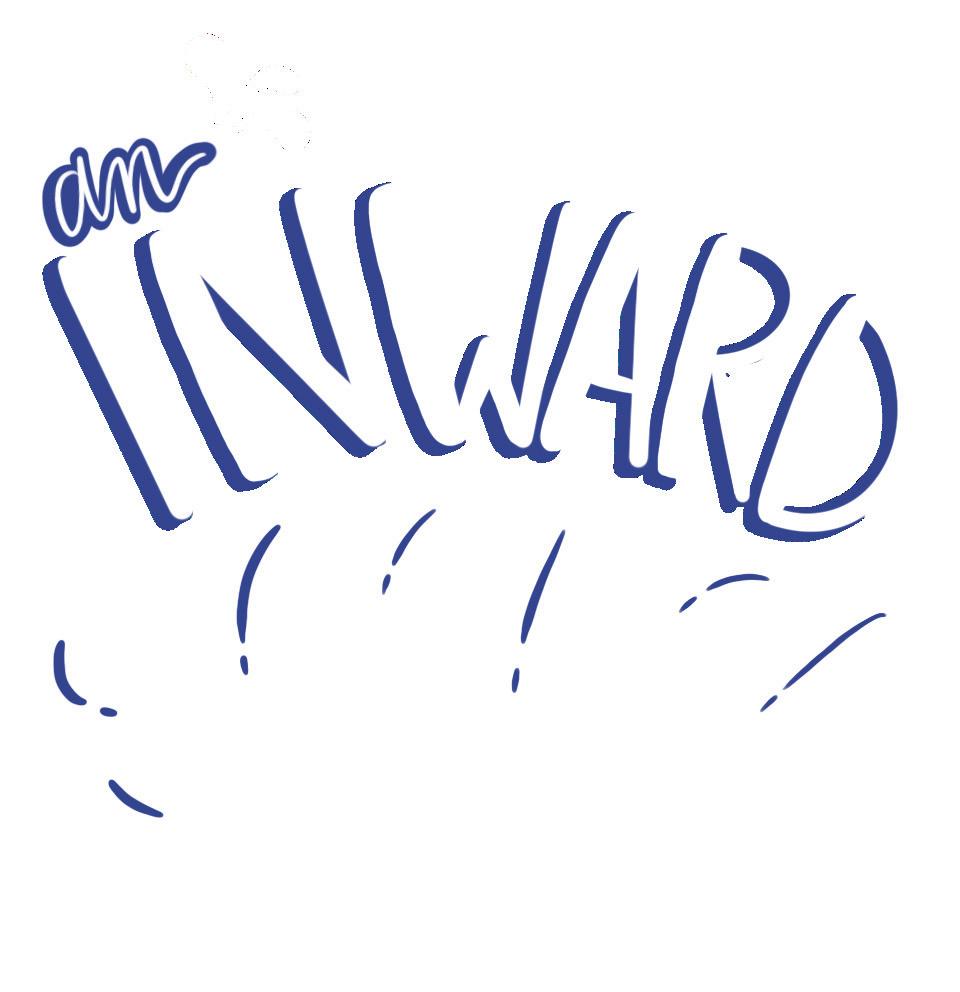

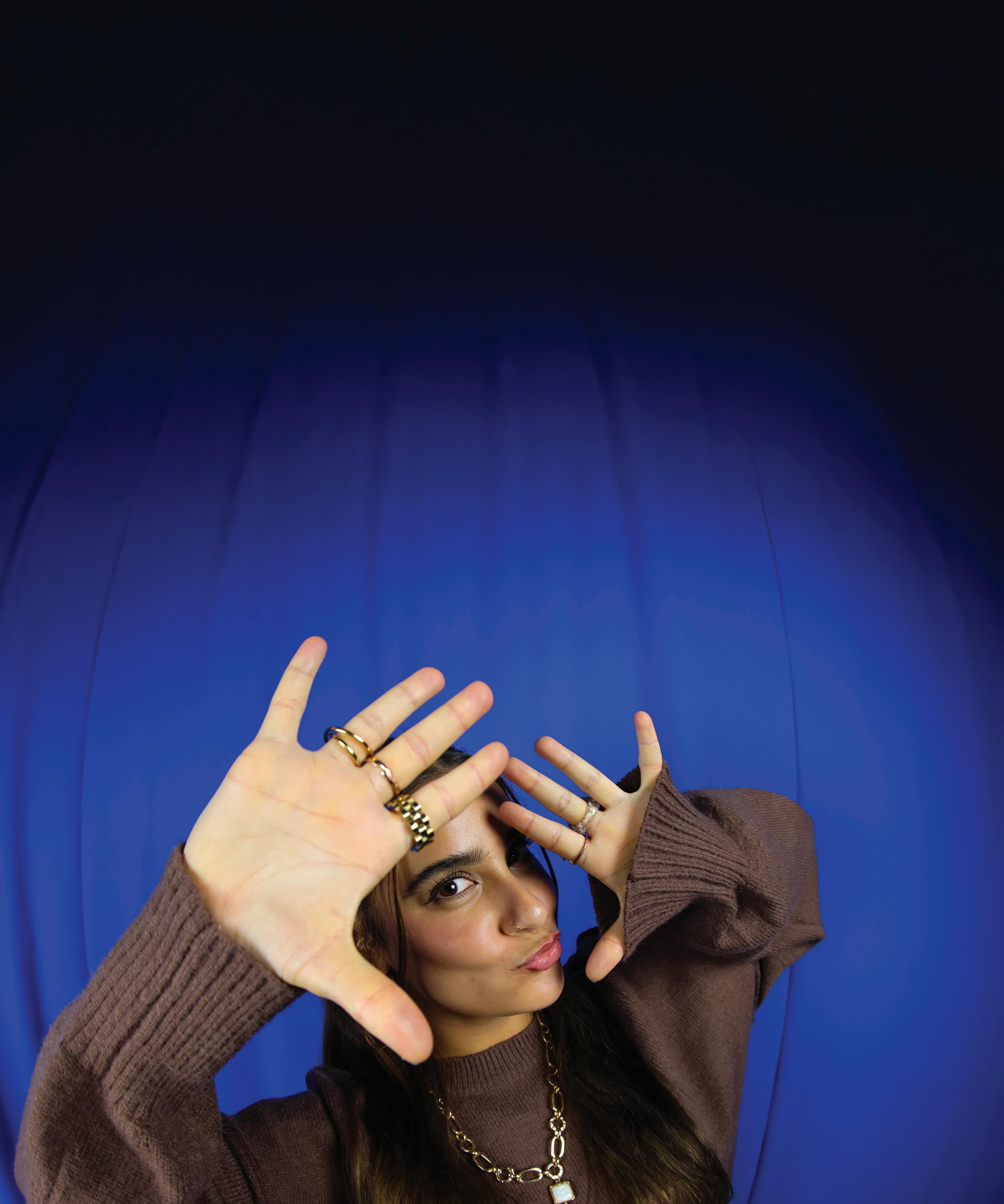
A hum in the bass, warm and unpredictable. Then a voice cuts through, unraveling heartache and healing in the same breath. The drums don’t shout; they sway. The keys don’t crash; they sing. This is soul — not just music, but memory.
A memory becomes motion through the sweet and smoke-flled sound of soul music. It’s love at 2 a.m., heartbreak at noon and surrender by sundown. You don’t just hear it — you feel it.
Joi Carr, Pepperdine English and Film Professor, has become well-adapted with this motion of memory with her childhood saturated with the sound and later translating into her professional career as a soulful musician.
“R&B/Soul speaks to me below conventional language,” Carr wrote in a Oct. 2 email to the Graphic. “There is a hum and a moan that is present in this music that embodies the ineffable way I experience my life—the inexpressible, indescribable ways I feel a range of emotions in my daily life in my body, all my lovely particularities.”
From dancing in the kitchen to cleaning on Sunday evenings to even opening gifts on Christmas morning, the sweet sound of soul music continues to linger in the hearts of listeners.
R&B music was the uniting factor in senior Kyla Randle’s family, where she said her shimmering childhood memories she holds so dearly are saturated with the chaotic sound of soul music.
“It always united us because the music was just a huge part of my family,” Randle said.
The music became Carr’s backbone from her early childhood. She wrote her family constantly had the music playing in the background of her fondest childhood memories.
While other families gather around the television to watch a movie, Carr wrote her family would gather around a radio, listening together as greats like Fela Aníkúlápó Kútì, Carole King and The Temptations took the stage.
“Just remembering that our home was always flled with these melodic and rhythmic sounds brings me back to our connection as a family,” Carr wrote. “Everyone in my immediate family sings too. We love music.”
Although senior Wells Faulstich didn’t dive into the sound until he was older, he said he enjoys listening to the music in moments that turn into memory.
“The vocals are just so beautiful,” Faulstich said. “You can just listen to it on the beach or driving and it always puts me in a really good mood.”
Rooted in the rich traditions of African American musical expression, R&B and soul music emerged as powerful voices of resilience, creativity and cultural identity.
The word “genre” is one Carr wrote she believes is only for convention and commercial purposes, for billboard use. She believes the term rhythm and blues (R&B) music is transgenre.
“[The music] embodies bedrock aesthetics that are derived from enslaved people of African descent in the colonies,” Carr wrote. “Their blend is of West African musical traditions, spirituals, gospel music, blues and jazz.”
Randle said listening to R&B with her friends has always reminded them of the beauty of their African American heritage.
Randle emphasizes the importance of acknowledging the fact African Americans created the blueprint for rhythm and blues, yet she has also enjoyed the evolution of the genre.
“The music originated with mainly Black artists but I also feel like it’s grown so much that it doesn’t need to just be a Black artist to have that soulful sound,” Randle said.





The emotion of the artists within this genre convey their soul into melody form.
Faulstich said there’s a song within the genre to capture every emotion imaginable — even the ones too complex or subtle to name.
“The genre is called soul for a reason,” Faulstich said.
The rhythm, blue notes, melodic structure and the off-beat melodic phrases are what Carr wrote captivated her and what continues to inspire her.
“This music speaks to me and for me, sometimes.” Carr wrote. “When I listen to artists that I resonate with I feel at home, enveloped in love and understanding. I feel joy.”
Like Carr, Randle said there’s an irreplaceable feeling of joy that comes with the music.
“No matter what I’m doing or how I’m feeling, I always come back to this music when I want to experience any emotion,” Randle said.







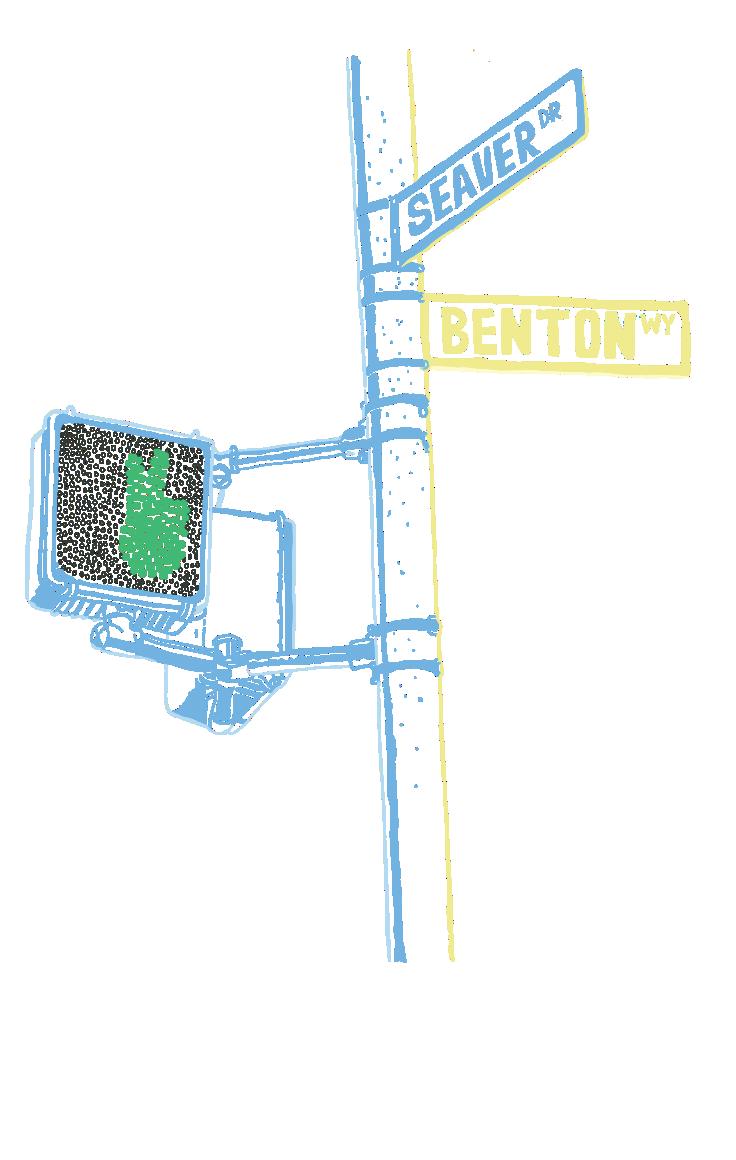
written by Nick Charkhedian
Hip-hop is a middle-aged man. His beard is long, his clothes are new and he’s taken on a different tone than the one he used to be recognized by. His distinctive qualities that people identifed him with back in the late 1980s feel like nothing more than a distant memory. He changed.
“I do believe it [hip-hop] isn’t just music, but it’s a culture that involves DJ-ing, break-dancing, graffti and then rap, as all respectable pillars of the culture,” senior Ephraim Rodriguez said.
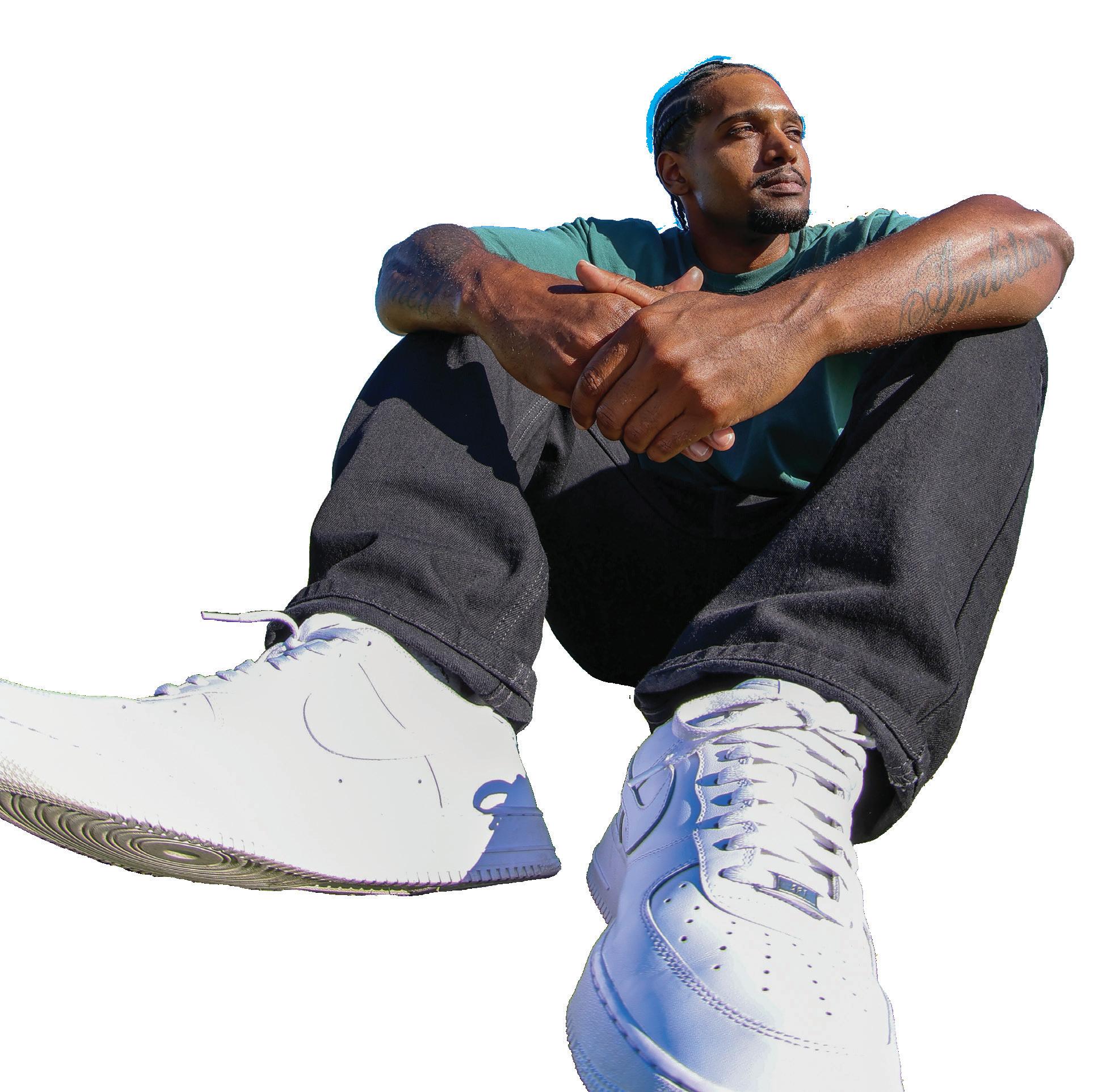


Rodriguez grew up in East Los Angeles, listening to hip-hop music on the radio and with his older brother. Along with his exposure to the music, Rodriguez said he believes he was exposed to hip-hop’s culture through different facets of urban life in Los Angeles.
When Rodriguez was in high school in the early 2010s, he said he noticed that period as a time when major change came to the genre. Artists who didn’t ft the stereotypical image the genre had come to be known for were changing the culture.
Rodriguez said he observed some artists from that era being responsible for breaking down so many walls that originally held up the template of hip-hop. He recalls people thinking the genre had already died, and expressed the further change as “beating a dead horse.”
Hip-hop has worn very different hats in its 52-year history, and artists, at different points in time, have made their thoughts clear on the change hip-hop was going through.
The artist Common released his version of a love letter to the genre in 1994, titled
“I Used To Love H.E.R.,” in which he refects on the history of hip-hop and how much the genre has changed since he frst fell in love with it. He refected on the genre’s roots and discussed the change the genre had gone through as the West Coast came onto the scene, a huge part of the genre’s change in the mid-90s.
Hip-hop artist Nas, whom NPR called “one of the greatest MCs of all time,” released an album called “Hip-Hop Is Dead” 12 years after “I Used to Love H.E.R.” Nas’s title took on a more extreme look compared to Common’s 1994 track.
In 2021, 15 years after the album was released, Nas said the album’s title was directed mainly to New York City, the artist’s hometown, on an episode of “The Bridge: 50 Years of Hip Hop,” but it still makes listeners wonder what the hip-hop we have today is.
In his 2018 track “GREY,” artist Saba views all the different phases as part of the evolution of the genre and the expected role from the artists over time. Saba said, “First they wanted it hip-hop, and then they wanted guerilla, and then they
wanted drug dealer, and then they wanted a dancer, now they want a drug addict.”
From a non-artist perspective, Rodriguez said hip-hop went through changes after its inception, from the days when it was known for more than just music in New York City to its gangsta rap days.
About a decade later it eventually turned into a sales competition with hipster rap entering the mainstream, and the decade that followed saw the takeover of trap music, which led the genre to where it is today.
Junior Arin Kenard, also known by his stage name Pablo Sanders, said he has been a fan of hip-hop for the past three decades and eventually began making his own hip-hop music. Kenard sees the change of the genre that he’s now a part of, and notices how diverse the sound within the genre has become.
“Times change and the sound changes,” Kenard said. “It’s so many different subgenres within hip-hop, compared to in the past where it’s, just like one or two different versions, where it’s like their own little worlds, that they all have their own


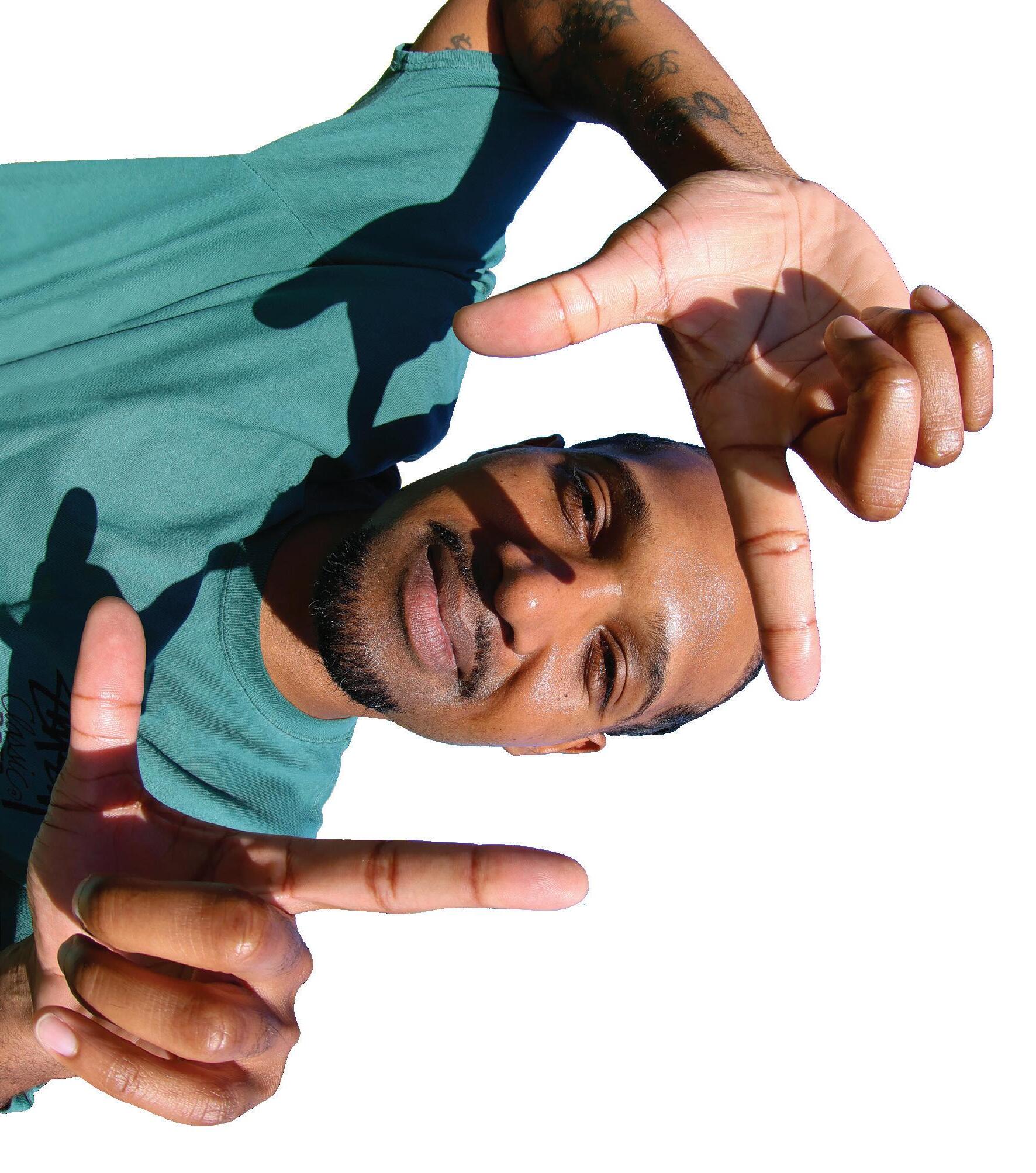
different artists and albums that represent hip-hop over the past 50 years.
The middle-aged man I described in the beginning didn’t just age and stay steady — he’s already lived a full life, and he’s still changing.
If the past has served as a basis for what to expect in the future, you can’t predict the change that’s coming.
New, fun and dynamic styles are constantly changing the sound of hip-hop music, and as a consequence, changing the culture. If anyone were to argue with that, I would encourage them to review the standards of what’s expected from hip-hop and how much they have changed
When backpack rap became a growing subculture within hip-hop, it defed so much of what mainstream hip-hop was about. In the 2010s, it became culturally acceptable for rappers to be emotionally





In the past 15 years, the perception of female rappers has taken a different tone.
At the same time, hip-hop music, just like all other kinds of music, is the product of artistic people expressing themselves and their surrounding culture through their talents.
“Hip-hop means to me, self expression,” Kenard said. “Bringing your true self, your true thoughts, to the world to hear and hopefully get something from.”
Hip-hop has changed, and there’s no reason to think that it won’t change again. Is that bad? Kenard said 10 years after he started releasing music, at the age of 35, he’s still changing.
“I think I’m still changing, because if I don’t, then I feel like I’m dying,” Kenard said. “So I just got to keep going and see how far our good can go.”










This Old Dog by Mac DeMarco
Coloring Book by Chance the Rapper
SOS by SZA
The “High School Musical” Soundtrack by the “High School Musical” cast design by Amanda Monahan

written by Nina Fife
photo by Betsy Burrow design by Amanda Monahan
Q: How did you frst get into music?
A: I grew up in a very small town, so it was very hard to have any interaction with music early on. My grandpa bought a guitar for my sister, but she didn’t really want to play it. So, I started fddling around and found that I actually like it and quickly it was something I resonated with.
Q: How do you see music in your everyday life?
A: It’s literally all around, 24/7. That’s basically all I think about, which can be hard with different elements of school and social life, but I really connect with people who listen to music like me. A lot of my friends on campus have a very deep connection with it too. When you allow yourself to immerse in a topic like that, it’s hard not to think of it always.
Q: What has music given to you throughout your life?
A: It has completely shifted my way of being. I used to be very introverted, then with music, if anyone meets me as a person, now they’re gonna see I’m very outgoing, always smiling, even though I’m going through a hard time. It didn’t used to be like that. Music made me become a hap pier person. I found it as a way of making me feel better and growing as a human being, as who I am and what I can offer to the world in terms of kindness and being a genuine person. When you’re exposing yourself to art and raw emotion, you shift the way you look at the world, you end up growing as a human being.
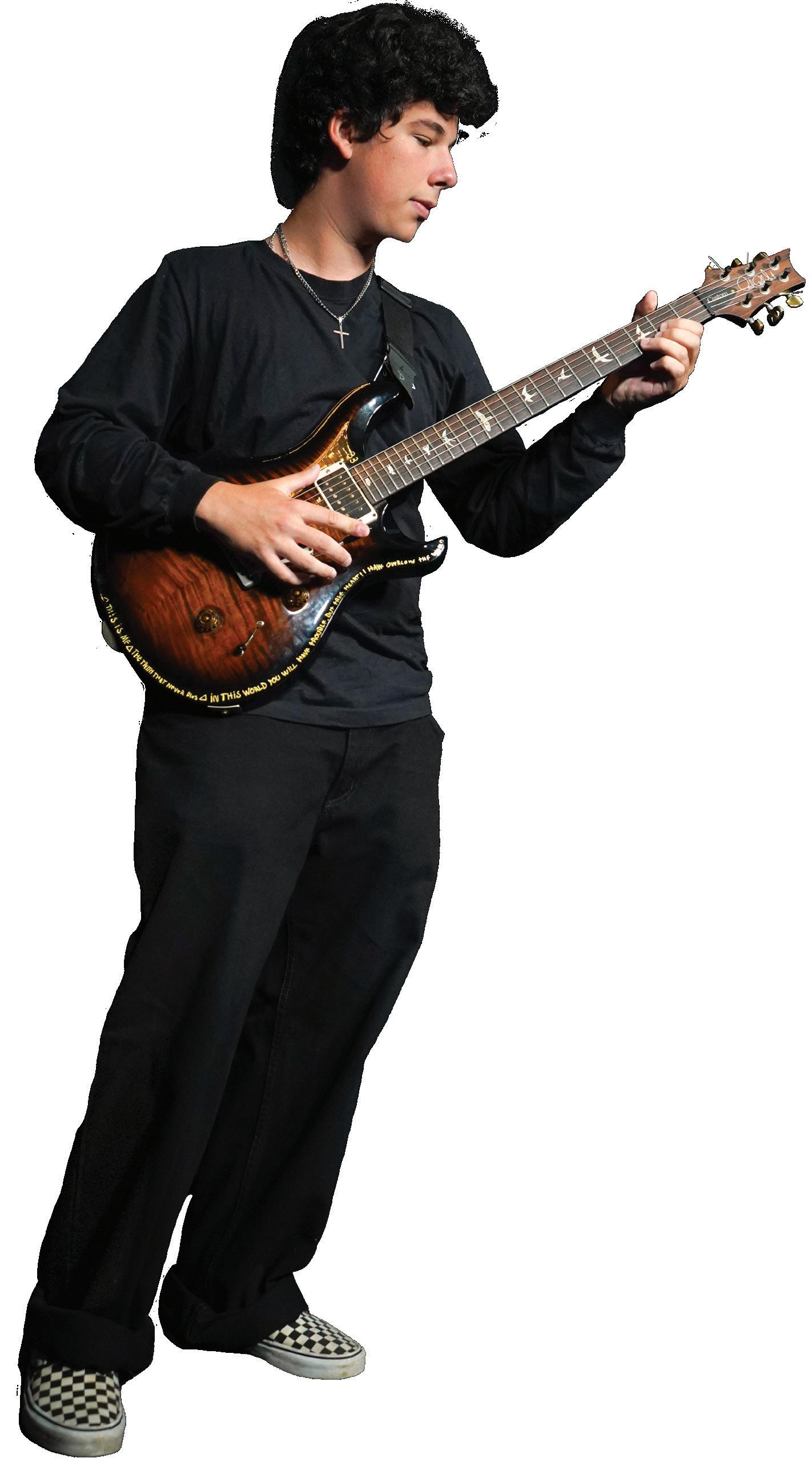
Q: How did you go from fddling around with a guitar to making music your career?
I bounced around with a few teachers but found I learn better by myself. Early on, the frst thing that was a big accomplishment for me was of Rock. I toured the as I was growing, I a friendship with Loureiro. He’s a famous guitarist. When I was 16, I released my frst EP with some pretty well-known people from Brazil. I was gaining a lot of traction so now I released a
Q: What purpose does music serve in your life?
A: Music is all about feelings and when you can really communicate your feelings. It opens a portal inside of your head, where you can express your feelings without actually doing it because in society, it’s kind of hard for you to express certain things that are not very easy to talk about. So to me, music was always a means of expressing. When I was young, it was harder to express myself with words, so that was a way for me to fnd it.
Q: Looking forward as you navigate through the rest of your life, do you want out of music?
I want it to be 100% of my life. I want to live a life where I don’t really need to worry about anything, just, like, making art. I want to just help people who may be going through whatever I was going through because music saved me a lot of times in my life. I feel like I need to give a lot of things back to God and the universe and society as a general. The driving force is always a philosophical standpoint of what I want to give to the world, so when I die, I know that I had a

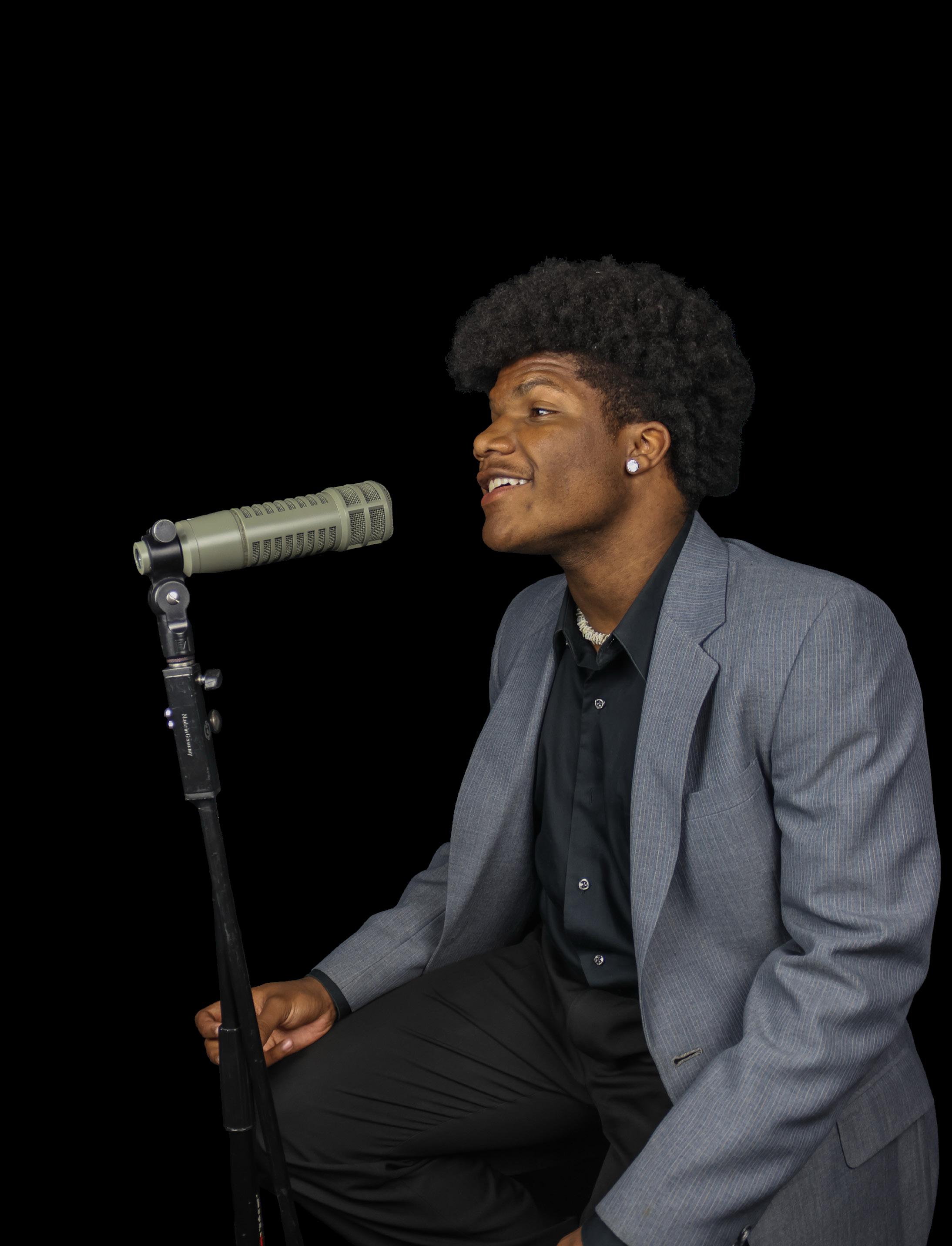
written by Shalom Montgomery
Betsy Burrow
With the strum of a guitar, the keys of a piano and the smoothness of vocals, jazz has entered the room.
She walks in with grace and a little kick, setting her apart from her peers in funk and soul.
Jazz began through a spirit of spontaneity. Groups of Black slaves would gather between work and sing and dance straight from the heart, according to the BBC.
The syncopation of these sounds brought about jazz. This syncopation, versus the simpler synchronization, is Religion Prof. Raymond Carr’s approach to life and how he views theology, he said.
“It allows me to have an appreciation for the beauty of difference because when I look at a book like Genesis, even in the beginning, is that the world is teeming, it’s fourishing, it’s all these different things,” Carr said. “The beauty of difference that is a part of this wonderful panoply.”
From there, jazz grew into a genre that is the parent of so many others, such as R&B, early hip-hop and even the new era of pop we are entering. Jazz is not simply a “genre of music,” but a root system from which all others stem. It’s a way of navigating life.
“Jazz is what you want it to be,” senior Amelia Mordan said. “And it’s always different and ever-changing in the way that the world is as well. And I think that’s probably the most special part about it.”
Jazz was created during a period in American history marked by signifcant stress and many trials; however, through it all, jazz emerged.
Absence of Words, Presence of Conversation
The beauty of human connection lies in the ability to communicate without words. Jazz is known for its absence of lyrics and an emphasis on the instrumental, according to The Guardian.
Mordan said she was drawn to the beauty of jazz, where little is said but much is understood. Jazz musicians often lean on their instruments as their voice instead of relying on words. It flls the space with an experience for listeners to create their own music within the music.
The “La La Land“ soundtrack is a contemporary approach to telling a story through music. The score for the flm, coupled with the dramatic storyline, made fans like Mordan view jazz in a new light, she said.
“The jazz in that album — specifcally without lyrics — is what makes it super special because it tells a story through each press of an instrument,” Mordan said. “You don’t need words to tell a story, and it goes along so well with the storyline, and it’s so emotional, even with no words.”
Nonverbal communication often allows us to say the words we can’t precisely articulate. We can use our body language, our emotions and our gestures.
Carr said he deeply appreciates the silence and absence of lyrics jazz creates, acknowledging that it makes “silence visible.”
“Jazz allows me the freedom to hear the sound and move to it,” Carr said.

Jazz musicians use the speed at which they play, the inclinations and even the pauses and silences to bring listeners into a conversation with them, according to AllAboutJazz.
Junior Henry Hicks said he loves Cuban jazz and jazz trumpeter Miles Davis, and appreciates the instrumental vibe that jazz sometimes falls into. He can easily associate it with his own life.
“How fast the song is going, and it can kind of be like the way our daily lives are super fast,” Hicks said. “And then how in other parts of the song, it would slow down. So just reminding ourselves, so we need to slow down.”
There is an art to “listening” to nonverbal communication, which is a vital part of building relationships with others, Hicks said.
“You have to listen to what people are saying, and what it means to listen, to me, is really being intentional and thoughtful,” Hicks said. “And hearing what people are saying and then responding to it.”
Drawing from its African American roots with the call-and-response style, jazz artists can “call” to the listener without using actual words. With their body language and pitch of the instrument, jazz creates the unique ability to speak without words, Carr said.
“When you say something, you’re not just saying it, you’re saying it with your body, your style,” Carr said.
Spontaneity of Jazz
Jazz listeners often adore its spontaneous nature, according to Jazz Aspen Snowmass. However, the spontaneous nature of jazz is, in fact, very structural.
Thelonious Monk was a popular mid-20th-century Black American jazz pianist. His approach to jazz was to start with a melody and improvise from there.
“The spontaneity may happen in the moment, but it’s already bringing a certain framework to that,” Carr said.
Hicks said he admires the fow of jazz and
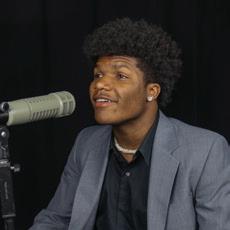



has slowly begun to embrace a more spontaneous lifestyle that is still rooted in the “melody” of life.
“I’m not not worrying about school, but enjoying life and being okay with a little bit of the unknown, because I’ve been trying to plan everything,” Hicks said. “You can’t always plan life.”
Mordan said she has a similar approach, leaning into the fow and spontaneity of life, regardless of where it takes her. She experienced an unexpected professional shift in mu sic. Constantly growing up around music, Mordan was expecting to explore a musi cal career in more secular music.
But life, like jazz, went in a different direction; she began singing with Pepperdine’s WAVES WORSHIP.
Through her experience with WAVES WORSHIP, she’s gained a differ ent perspective on what music truly is, Mordan said.
“The thing that defnes jazz the most for me is freedom,” Carr said.
The freedom to remain in a melody, the freedom to not. The freedom to be instru mental, the freedom to not.
Jazz stands alone. She often isn’t put in a box, Carr said. There’s acid jazz, bebop, free jazz, swing and the list goes on. Each has different characteristics that set them apart, but they all come from the grand
tree of jazz. As humans, we each can resonate with a particular attribute, whether it’s the eclecticism of acid jazz, the spontaneity of free jazz or the grooviness of swing.
“That’s the cool part about jazz, it’s never done the same when it’s performed,” Mordan said. “I feel like more things should be like that. It just makes it more human, you know? It doesn’t have to be this perfect scenario. It can kind of be a little unique every time it’s done.”


Fly Me to the Moon


Consulate Case The Best Things In Life Are Free




My One And Only Love It Never Entered My Mind Everything Happens for a Reason
On a Spectrum, where do you Land for instrumental versus lyrics when it comes to a song?
written by Karla Suzuki
art by Betsy Burrow design by Amanda Monahan
Transparency Item: This is the opinion and perspective of the writer.
Throughout my life, being an international student has proved to have both advantages and disadvantages. I have been able to experience new cultures, explore new places and make life-long friends across the world. However, I am also familiar with saying goodbye and closing important chapters of my life.
I was born in Spain and lived in Mexico and Peru, all before coming to college in the U.S. a few years ago. I grew up lacking sense of identity, hating the question “where are you from?” because I never really knew what to answer.
I consider my life to be equally infuenced by all the places I have moved to, yet none enough to confdently call them ‘my place.’ Home isn’t a temporary place, but a lifelong collection of memories.
As confusing as it has been to grow up exposed to that much change, I have learned to appreciate it. Oddly enough, when I refect back on my life, goodbyes don’t feel nostalgic or sad because I have chosen to keep my

Karla’s Medicine
Karla Suzuki



Sirenas
Taburete
Agua
Jarabe de Palo
Brillas
León Larregui
memories of those places alive. I constantly fnd myself reaching to music to do this.
Music reveals the true soul of a place. Many times, music is heavily infuenced by the vibrant sounds of a culture, traditional instruments and shared experiences. I have found specifc songs perfectly translate my experience in all of the places I have lived in.
I am surely not the only one who associates songs with memories because I listened to them on repeat, or related to the lyrics. Music is a form of transportation, able to take you back to a specifc place or moment as if no time had passed, stirring back old feelings and memories.
I use music as my favorite form of transportation when I want to connect with the collection of pieces that make up who I am today. “Colgando en Tus Manos” when I want to remember the playground I used to run around with my friends on my frst home in Spain. “Mexico en la Piel” when I want to remember the frst Independence Day I celebrated with my grandparents in Mexico. “Cuando Pienses en Volver” when I want to remember getting ready to walk across the stage at my high school graduation in Peru.
“Back On ‘74” when I want to remember the struggle of ubering to Ralph’s Beach during my frst year in Malibu.
However, in the same way I seek music to
remember these moments, I am instantly transported and equally recharged when a song comes up unexpectedly.
When I click on an old playlist and a song that I associate with any of those places comes up, I am immediately reminded of what it was to like there and to be surrounded by my people. Even without a prior thought of any of my past homes, a song can seamlessly take me there and evoke emotions I didn’t know I had.
Living away from home, far away from family and the people I grew up with has its struggles, and feeling connected to a place that is not tangible anymore is hard. Music allows me to reconnect, remember and relive, even if it is just for a few minutes.
To me, home is all those places, all those people and all the experiences I have lived at each place. Even if I am not there physically anymore or the moments have long passed, I know through music and songs that I will always have a little piece of home, just a play button away.



Algo Contigo
Rita Payes & Elisabeth Roma
Mariposa Traicionera
Maná
Cuéntame
Pedro Suárez-Vértiz




Maracas
Joan Sebastian & Alberto Vázquez
Canela en Rama
El Kanka
Hasta La RaÍz
Natalia Lafourcade
Me Enamoro de Ella
Juan Luis Guerra 4.40

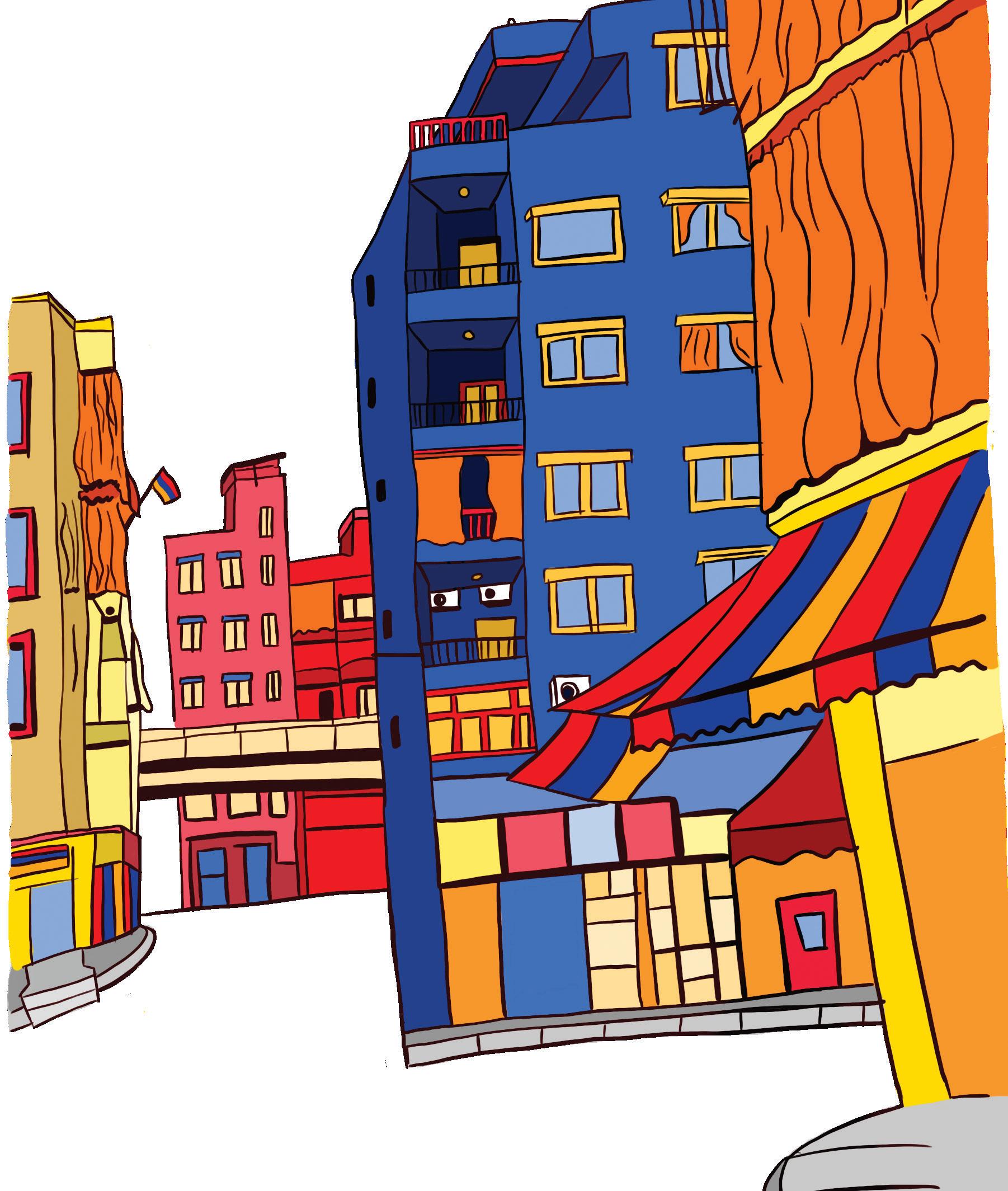
written by Nick Charkhedian
art by Betsy Burrow design by Amanda Monahan
Transparency Item: This is the opinion and perspective of the writer.
It’s diffcult for me to fully consider America home. The food is different, the streets are different, the language is different, the music is different, the whole culture is just: different. I grew up feeling like a foreigner, like an immigrant who misses “back home,” unsettled in this country because it just didn’t have the same favor.
I was born in Mission Hills, Calif. I went almost 20 years without having ever gone “back home.” I understand this sounds baffing to the average person.
To give some context, I come from Armenian heritage and identify as a Western Armenian, a type of Armenian native to a land west of present-day Armenia and now commonly spread outside present-day Armenia living in diaspora.
My father was born in Aleppo, Syria, within a community of Armenian immigrants whose families had found refuge there during the early 20th century. When he was a teenager, he joined another part of the Armenian diaspora in Beirut, Lebanon, the same city my mother’s family had immigrated to after the
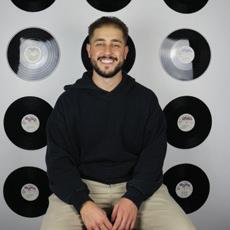
Nick’s Ode
Nick Charkhedian



Sirel Yem
Paul Baghdadlian
Anoush Hayrenik
Element Band
Pari Arakil
Armenian Public Radio
beginning of the same century.
When I was 19 years old, I traveled to Beirut. I had expectations of immediately being at home, but once again, I felt like I was in a foreign land. Things changed towards the second half of my trip, when I had fnally visited a place called Bourj Hammoud, a small town in Beirut heavily populated by Western Armenians — people that I wouldn’t just say are very similar to me but are actually the same. I was with people who spoke not only the same language, but the same dialect. I was with people who not only ate similar foods to what I grew up eating, but had the same preparation styles and spices, giving it that homemade feel. I was with people whose families had fed the same genocide and persecution mine had and chose to settle in the same place, making me feel like I was connected with them generationally.
It’s diffcult to try and put myself in the shoes of my parents’ and grandparents’ generation. Their families had fed genocide and religious persecution, so they came to a new country with hope of things turning around only to be faced with a civil war in Lebanon, where death and destruction had become common within the city of Beirut for people of all ages. But as a child of that generation, I can relate through the community that found peace in a shared religion, cuisine, lifestyle and music.
I realize how odd this might sound, but I
believe a region can give off a certain sound or genre. After all, different parts of the world have different styles of music that’s infuenced by their surroundings.
When I think of my time in Bourj Hammoud, and what the town must’ve been like when my parents were my age, I think of a known album within our community: “Sev Atcher” by Paul Baghdadlian. Every time I listen to that album, I feel connected with a part of my community, with a part of my people. As the album’s lush synths and poetic strums play, I hear and feel things that simple words couldn’t have done.
If you were to look up pictures of Bourj Hammoud, you might be confused with this glamorization. The town is often recognized as a ghetto with cheap housing and low standard living, but sometimes I wish I had grown up in the community and fellowship that I’ve always craved, the community and fellowship I’ve heard so much about 50 years ago in that beautiful “ghetto.”
Things don’t last forever, and that community has largely moved to different countries. Some of them have assimilated and lost some of that “favor.” But every time I press play on the album’s opening track “Sirel Yem,” I imagine I’m back there, surrounded by my people, at home.



Hye Aghtchig
Paul Baghdadlian
Yerevani Aghchiknerin
Tata Simonyan
Sev Atcher
Paul Baghdadlian




Ari Ari Im Sirelis
Paul Baghdadlian
Julietta
Paul Baghdadlian
Yerevan Erebouni
Armenian Public Radio
Antzrev E Kalis
Paul Baghdadlian

written by Nina Fife photos by Katherine Lytle design by Betsy Burrow
Whether listeners are united on the front of disliking the genre or are brought together through the shared experiences artists narrate in their songs, country music is rooted in connection. What started as a blend of Appalachian folk and African American blues has grown into a diverse global genre that spans everything from traditional storytelling to pop-country crossover hits.
“Country music tells a story, and it reminds me of similar stories that I’ve gone through in my life,” frst-year Sarah Wood said. “I feel like refecting on those stories that have happened to me helps me reminisce about good times and maybe sad times that I’ve overcome.”
Country music allows listeners to focus on personal growth through the tales artists choose to tell. The stories told through country music encapsulate genuine human experiences.
The power country music has to communicate history and human experiences starts with the genre’s origins. Hailing from the Southern Appalachian Mountains, the genre was born out of a blend of other types of music, from blues and jazz to hillbilly, according to PBS.
Ray Benson, the frontman of the Western swing band Asleep at the Wheel, said the blend poured into country music allows it to describe “everything about the immigrant experience brought to America and Americanized,” according to PBS.
Since country music was born from the combination of different genres, it helps represent America as a whole and all of the diversity treasured within its borders, according to the Texas State Historical Association.
In a 1971 recording session with Earl Scruggs, John McEuen, a multi-instrumentalist part of the Nitty Gritty Dirt Band, said, “Country music wasn’t called that yet, but it was music of the country,” according to PBS.
Through this work, country music tells an array of stories from different walks of life. Not only do these stories help bring individuals closer together, but it allows for personal self-refection on the relation of shared experiences and memories told through the songs, Wood said.
“Country music is very expressive,” Wood said. “I feel like it talks a lot about how somebody’s actually feeling.”
The ability for artists to connect with their listeners makes the interaction with country music more intimate, Wood said. It is also something she feels a lot of artists aren’t doing in the modern world.
“Artists today can put on a show that’s not really them,” Wood said. “I feel like country artists really try and be themselves and write about something that’s real, like how they’re feeling, what they’re going through.”
Not only does it allow for individuals to reminisce on their own experiences, but country music presents challenges to its fans as well. There is an increasing dislike toward country music from 1993-2012, according to a 2012 Poetic study.
It is easy to see the hate country music attracts through social media. However, Wood said haters just haven’t given the genre a chance.
“People that hate on it haven’t heard all different types of country music,” Wood said. “There’s more pop country music, there’s older country music, there’s love song country music, there’s a lot of different variety. No matter what you like, if you were to try something, you can fnd something that you would like.”
Wood said the variety within the genre is what attracts her to it. While she listens to other types of music as well, she can fnd something that fts any feeling in country.
“If country music only sounded one way, I would get bored of it,” Wood said. “What makes me want to listen to it all of the time, and probably the most out of everything else that I listen to, is that there are a lot of different sounds to it.”
For junior Clare Mortimer, country music’s versatility is why she said it is her go-to genre. She said 95% of the time she is listening to country because no matter what mood she is in, there is a country tune to match.
“Any season that I’m in, there’s a song for me,” Mortimer said. “There’s always a song that explains exactly how I’m feeling. There can be hype or it can be slow or love, or mourning someone, there’s a lot of variety.”
Through its variety, country music possesses the unique ability to foster genuine human connection across different ages, backgrounds or experiences. From family, friends or romantic partners, country music lovers have relied on their tunes to bring them closer to the people around them.
Some of these connections started from a young age for many listeners. Junior Cal Wipf said country music is the go-to in his household.
“It’s just something that has been a part of my family,” Wipf said. “It’s relaxing and reminds me of home.”
As the only son in his family, Wipf said he fnds a special connection through country music with the women in his family — his mom and sister.
“It gives more than just, ‘Oh, she’s my mom,’ and ‘Oh, she’s my sister,’” Wipf said. “We can connect on a level where we don’t really have to say anything, we could just be driving and listening to music and vibes are good.”
Mortimer said she also uses country music to collect with a particular family member. She became a fan when country music was all her dad would play.
“I’ve just always grown up listening to it and it connects me with my family a lot,” Mortimer said. “They listen to a lot of country music. Growing up, my dad would play it, so I think that’s just where it stemmed from.”
Country music brings a level of nostalgia each time she listens, Mortimer said. Her dad used to play old Garth Brooks CDs in his red truck since it had no radio.
“Every time I hear Garth Brooks, it always takes me back to sitting with him and driving because that’s literally the only music we’d listen to in his truck,” Mortimer said. “When life is crazy or I’m focused on all these things, listening brings me back to a simpler time where I’m sitting, hanging out with my dad and the world isn’t too crazy.”
Mortimer is from Utah and her dad lives in Idaho. She said going to school in Southern California has separated her from her family, but country music allows for her to still feel close to them even while being far away.
“Anytime I miss him or I’m listening to those songs, it’s kind of like a blanket or a comfort food while being away,” Mortimer said.
Wipf agreed with Mortimer when he said country music is extremely reminiscent of home for him. With the connections he has between his family and the genre, listening to country tunes always reminds him of where he came from.
“Going home for a home-cooked meal, country music is like that for me,” Wipf said. Wood also said country music reminds her of home, but specifcally because of where home is. The frst-year comes from Fort Worth, Texas, where many country star greats have come from.
“Since I am from Texas, it really helps me feel like I’m at home,” Wood said. “Especially

being so far away from home, it would take me 22 hours to drive home from here, and feeling like I have that to hold on to.”
The distance between school and home doesn’t only separate out-of-state students from their family but their best friends, as well. Mortimer’s friends all juggle busy schedules as college students, but they’re still able to fnd time to connect together over country music.
While Mortimer is in California, she said she is able to text her friends when a new album is released for them to share about. When she’s home with her friends again, they make it a priority to attend summer concerts together.
“No matter where we are, it’s something we can listen to, and then come together to talk about,” Mortimer said.
This connection is much deeper than liking the same song, Mortimer said. With the weight country music has in her life, Mortimer fnds a strong level of comfort with those who share her music taste.
“It is something that’s really meaningful and deep, just to have that comfort of someone understanding the way you view the world,” Mortimer said.
Country fans also unite as a community over a shared love for their music. This connection can come in many different forms, from romantic to the tightest of friendships.
As a member of Pepperdine’s Baseball team, Wipf said he also uses country music to get close to his teammates. With the team striving for success together, the unity provided through the shared love for music
can be especially important.
“If you walk by the feld here, you’ll always hear country music playing,” Wipf said. “It is a good way to connect with the boys. We’re all listening to the same thing, we all know the words and we can all appreciate it and kind of build our relationships with each other.”
Mortimer and Wood both said some of their favorite memories involving country music have been listening with their friends.
“It reminds me of when I was with my friends and we were listening to a specifc song going to the lake, or whenever something happened, it just kind of takes me back to being at home,” Wood said.
Mortimer’s favorite memory ironically happened when she was studying abroad in Europe and had the chance to see Megan Moroney in Switzerland. At the end of the concert, she said she got to take home one of Moroney’s boots with her signature on it.
“It’s so funny being in Europe and still having that piece of home with country music,” Mortimer said. “That really bonded me with the people I was abroad with, and it’s something we still talk about now. So I just feel like, anytime country music’s involved, I’m growing closer with people around me.”
Country music has evolved with time and yet remains timeless as it adapts to the modern music scene. From old twang to pop-country, each country song possesses the ability to communicate real human experiences to listeners while bringing them together through their shared love for the genre.














Every Sunday morning, my home church starts the service and after a few minutes, the congregation stands as the band plays music. People stand and sing along to songs that declare praise to God, and after a sermon along with some announcements and a prayer, before the fnal prayer of the service, we continue in our routine: worship.
As I sat in church one Sunday morning, the worship band ended their last song before my pastor got in front of the congregation. He mentioned the giving of money, and how worship music isn’t the only expression of worship for believers.
“Worship is a heart posture before the Lord,” senior Max Holdorf said. “A heart of worship is coming humbly before the Lord and declaring that He is God and you are not.”
A genre is a category of artistic, musical or literary composition that is characterized by a particular style, form or content. Genres, such as worship music, come with culture. They are often expressed through styles of clothing, dancing and the type of gathering expected to listen to the music.
When people think of another genre, they often associate the music together based on sound as well as lyrical content, but sound often gets priority when it’s time to categorize. On the other hand, worship music prioritizes lyrical content, and the sound can range drastically.
“A worship song, for me, has to declare truth about who God is and prompt the singer or musician or listener to agree with that truth,” Holdorf said.
While some students might recognize Humanities Prof. Nicholas Cumming as their Religion or Humanities professor, others might recognize him as an guitar player who occasionally joins WAVES WORSHIP at The Well, a weekly worship event held at Pepperdine’s Amphitheatre.
“Something that’s so unique about Pepperdine [is] that you can worship with students,” Cumming said.
Cumming is a member of the Churches of Christ, where musical worship is done a capella. Cumming said he views his musical ability as an irony, since he can play instruments but said he has no ability to sing.
Despite his self-proclaimed inability to sing, Cumming said he believes at the time of worship, Christians are
uniting in their recognition that they all stand under God. Despite the different things that might want to separate Christians, the Church is united by recognizing that Christians aren’t their own gods.
“We all stand under one God as a united people, redeemed by Him and being led closer to Him,” Cumming said. “When we unite in the Churches of Christ, we unite with our voices. Everybody sings out, even horrible singers like me who sing out, and yet our voices all kind of come together as one chorus. At The Well, it’s a mix of instrumental and voice that all mold together towards God.
“And again, I think that’s a great sign of what we’ll see in heaven, where all voices are united as well in worship to God forever. So it unites us in so many ways,” Cumming said.
Pepperdine’s Hub for Spiritual Life hosts The Well at the Amphitheatre. The Well isn’t restricted to students and the Hub’s website describes it as an opportunity for believers from all backgrounds to come together for fellowship, music and spiritual teaching.
When Cumming joins The Well, he said he’s singing alongside students as well as members of the WAVES WORSHIP band, who recently released their frst album in September 2025.
Lily Salanty, associate director of Worship for the Hub, helps lead WAVES WORSHIP. Salanty said she believes that worship is the reason humans were created, and is a response to God’s presence.
Salanty said when humans have an encounter with God, they’re led into humility and purifed. That encounter leads to letting go of unforgiveness and bitterness, because the light of God illuminates everything in our hearts we aren’t meant to carry or live into.
“The blood of Jesus covers us all, like we’re all one under Him,” Salanty said. “If your identity is in Christ, that means over all things, over everything that you believe, every opinion that you have, you are a son or daughter of God and so is your neighbor.”
“Your will above all else, my purpose remains, the art of losing myself, in bringing You praise,” Hillsong UNITED’s Joel Houston sings on the band’s 2016 track “From the Inside Out.”
While I refected on the words my pastor said that one Sunday morning, I thought about how Christian worship isn’t just singing along when called to
do so during a church service.
“It’s really hard to give worship a singular defnition, because all that we do is worship,” Salanty said. “Worship is not just singing.”
As a member of the Churches of Christ, Cumming’s home church doesn’t use instruments, and he said playing the guitar for him has always been worship outside of his actual congregation in more specifc instances. He believes God gave him a desire and passion to learn how to play the guitar and he tries to fnd specifc ways to bring that skill back towards God more intentionally.
Whether he’s playing a contemporary Christian song or a song by The Beatles, Cumming said he believes if he were being a good Christian he would always orient his guitar playing as an act of worship towards God.
While Cumming acknowledged musical worship is one part of worship, he said another part that’s equally important concerns the inside.
“I can be out worshiping with my hands up and excited, but if inside I’m oriented toward something else — to put it very nicely — if I’ve made myself an idol, if I’ve made my career, money or something else an idol, what am I actually worshiping?” Cumming asked.
Cumming said he believes that every aspect of our lives can and should be an aspect of worship, because it should always be asking that question of how am I being obedient to the will of God. Whether that’s being illustrated through emails and text messages, or conversations with colleagues and interactions with students, he
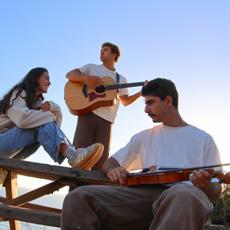



believes it should all be oriented in that direction.
He gave the example of a mathematician doing hard work on a theorem or a natural scientist examining God’s world and how those can be acts of worship because it’s really down to what’s going on the inside.
“Jesus uses some examples of people going out in the public square, just giving all these big loud prayers, saying how great they are and how good they are at worshiping,” Cumming said. “And he values the person that quietly goes in, into a quiet place and offers themselves to him. He’d rather have that than the big loud spectacle. But the big loud spectacle, if oriented correctly, can be just as valuable.”
I refected on what Cumming said about orientation of the heart, and how doing actions of worship — like giving the offering money my pastor mentioned — isn’t all there is to worship, but giving it with the right orientation is, and I understood what he meant about having the right orientation even during moments that might not feel like “typical worship.”
When I asked Cumming about what personal worship should look like in the life of a Christian, he referenced what the Apostle Paul wrote in his letter to the Romans.
“Therefore, I urge you, brothers and sisters, in view of God’s mercy, to offer your bodies as a living sacrifce, holy and pleasing to God — this is your true and proper worship.”











